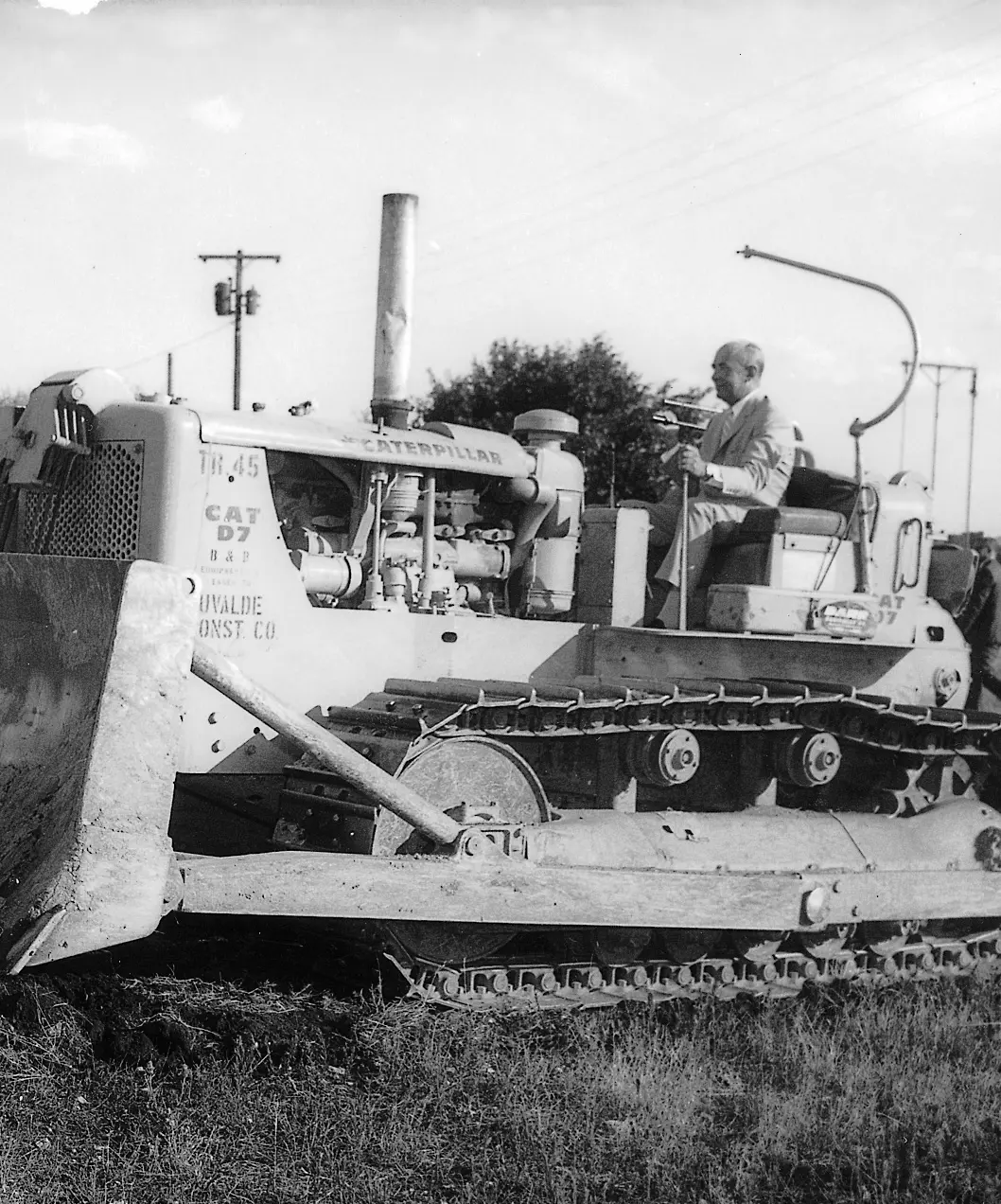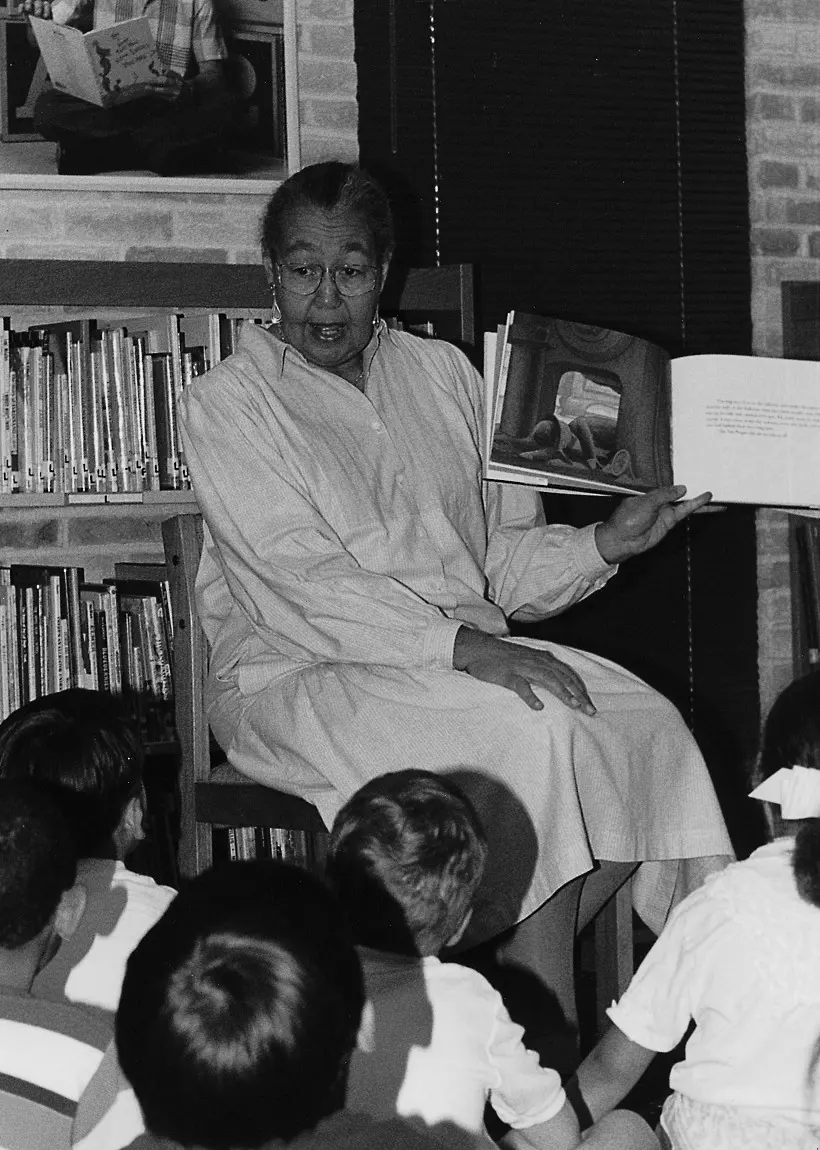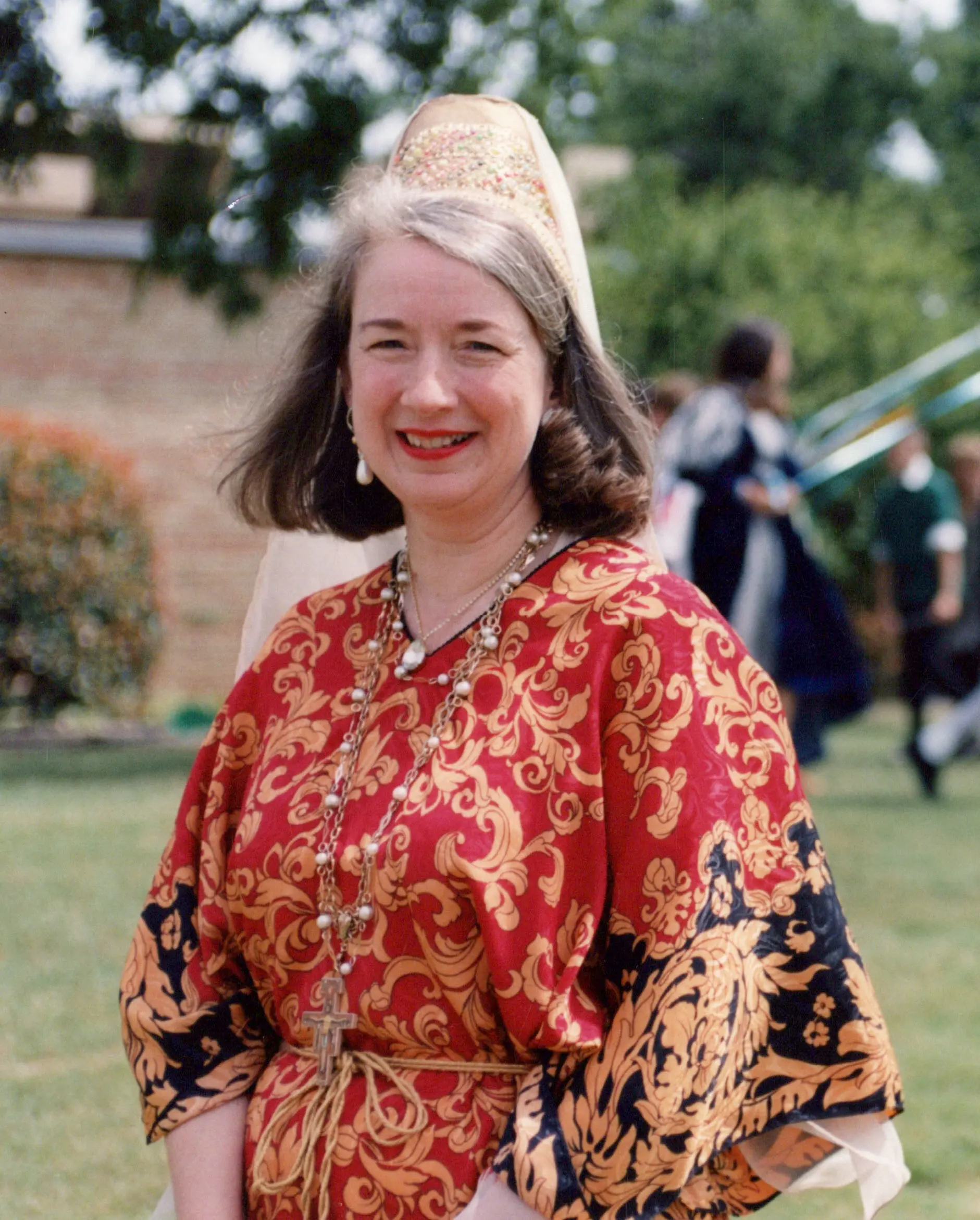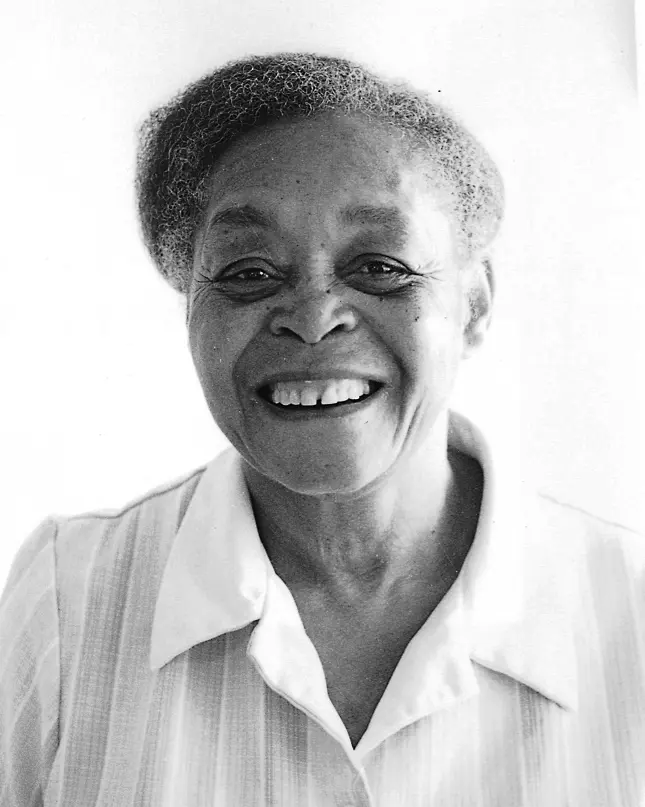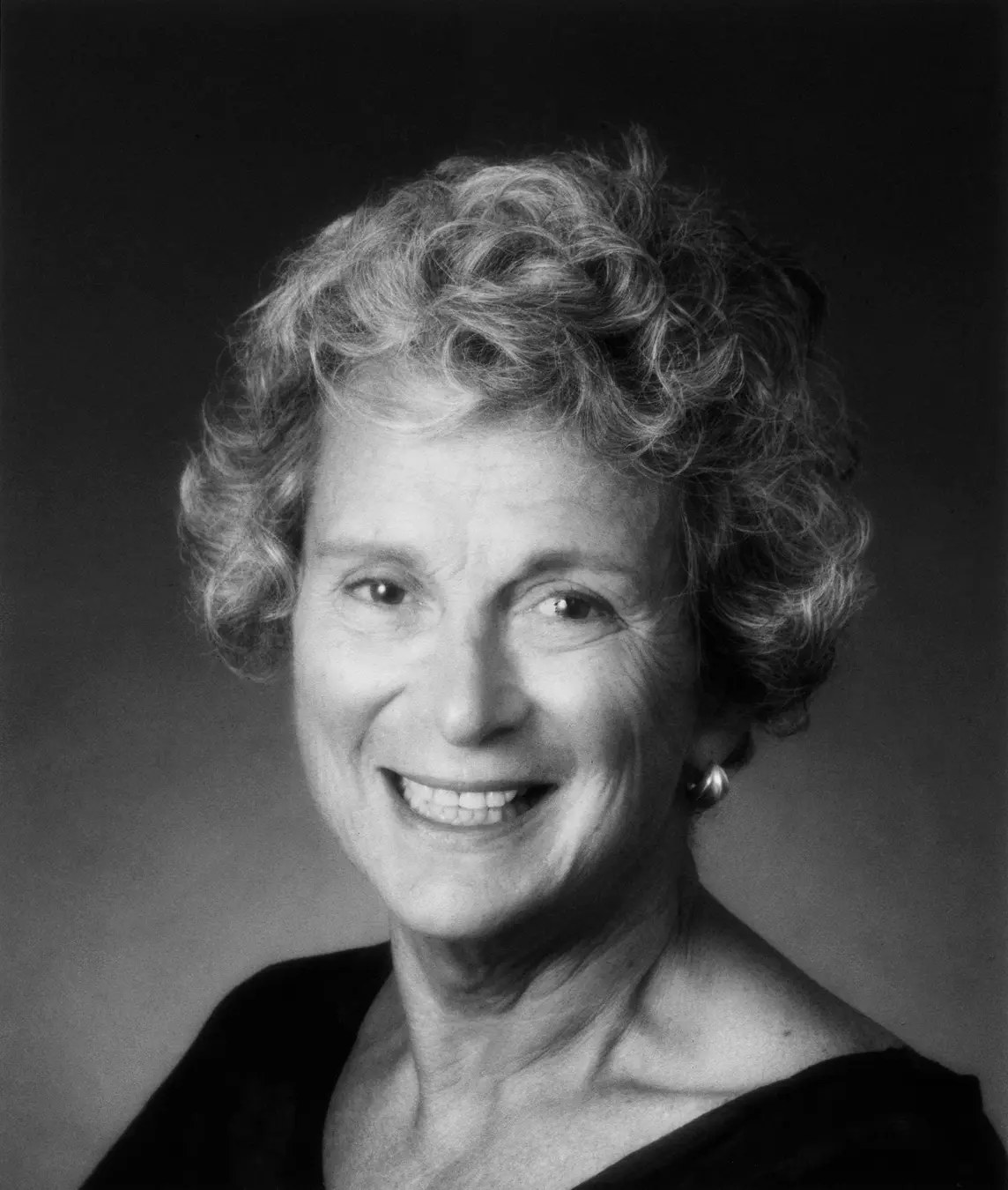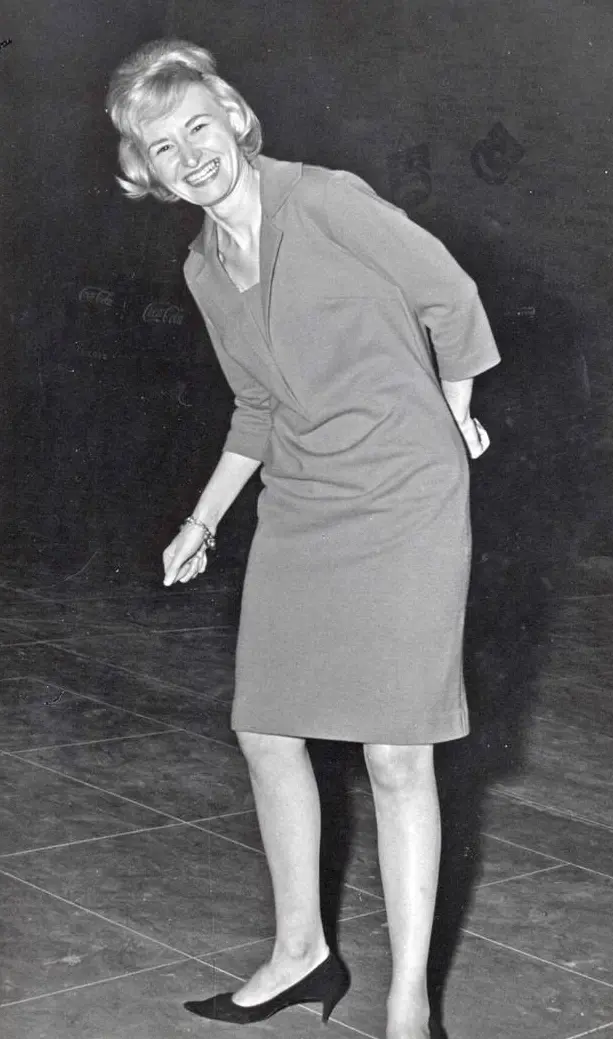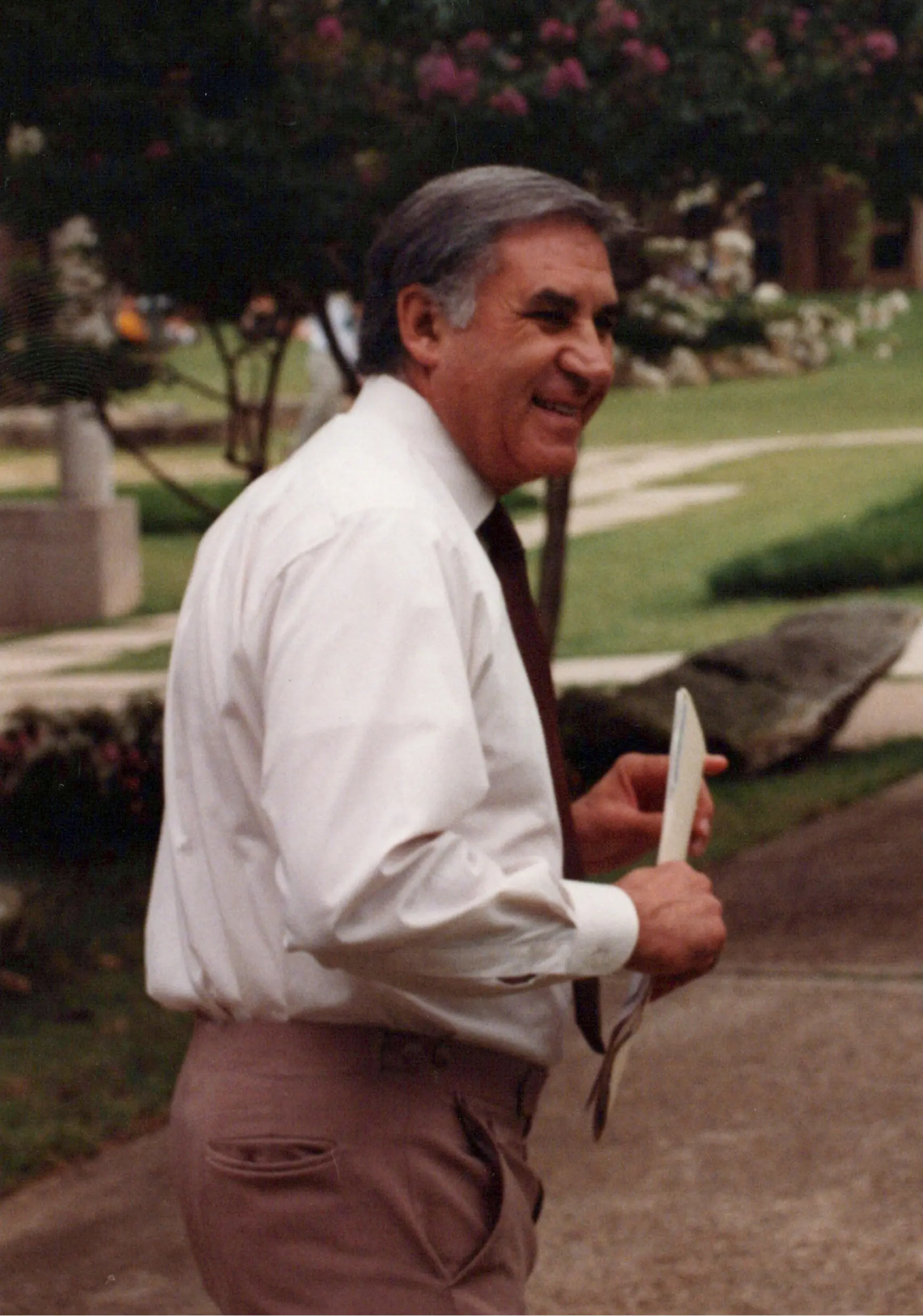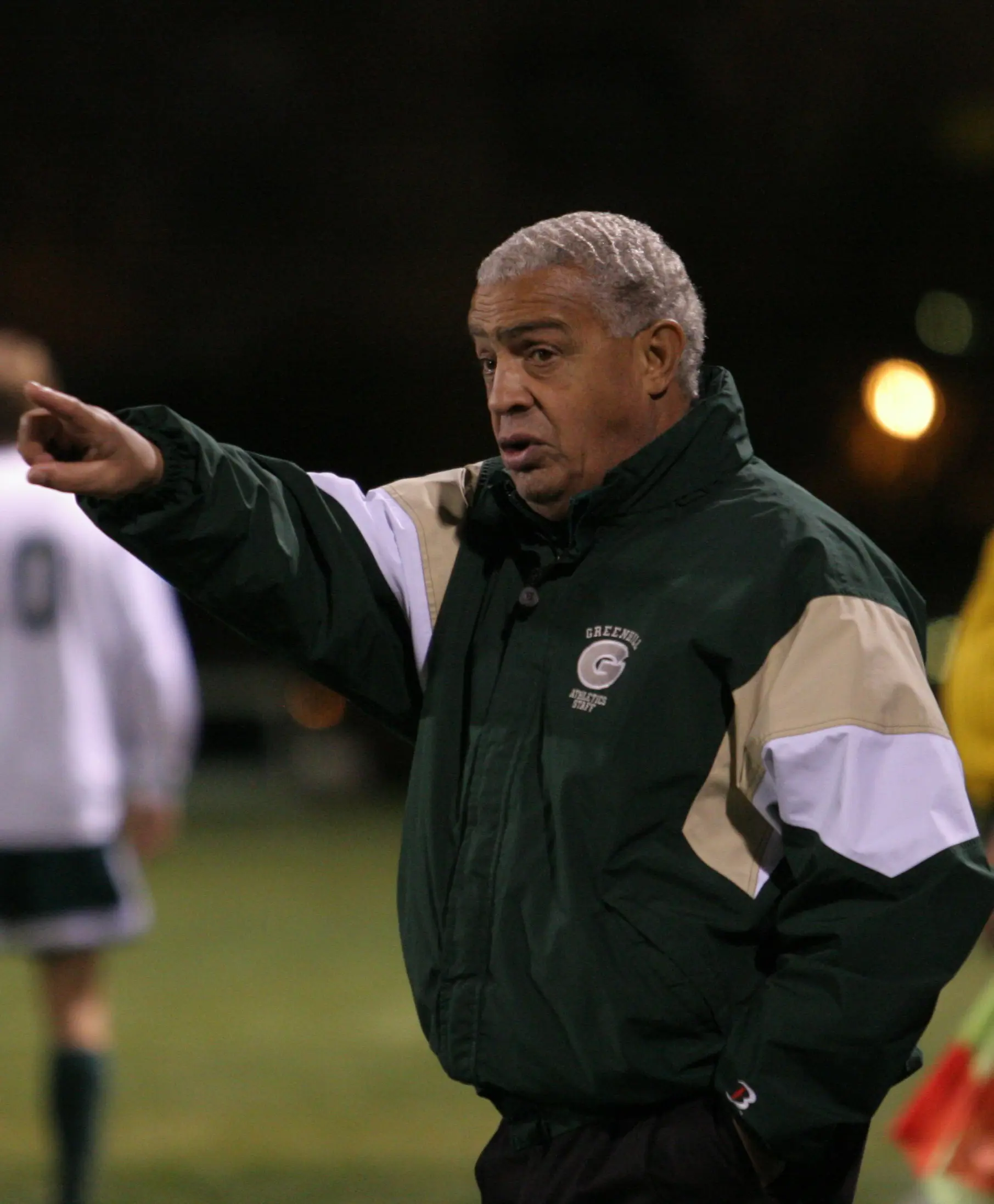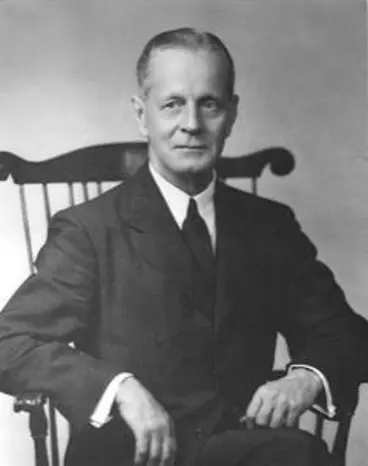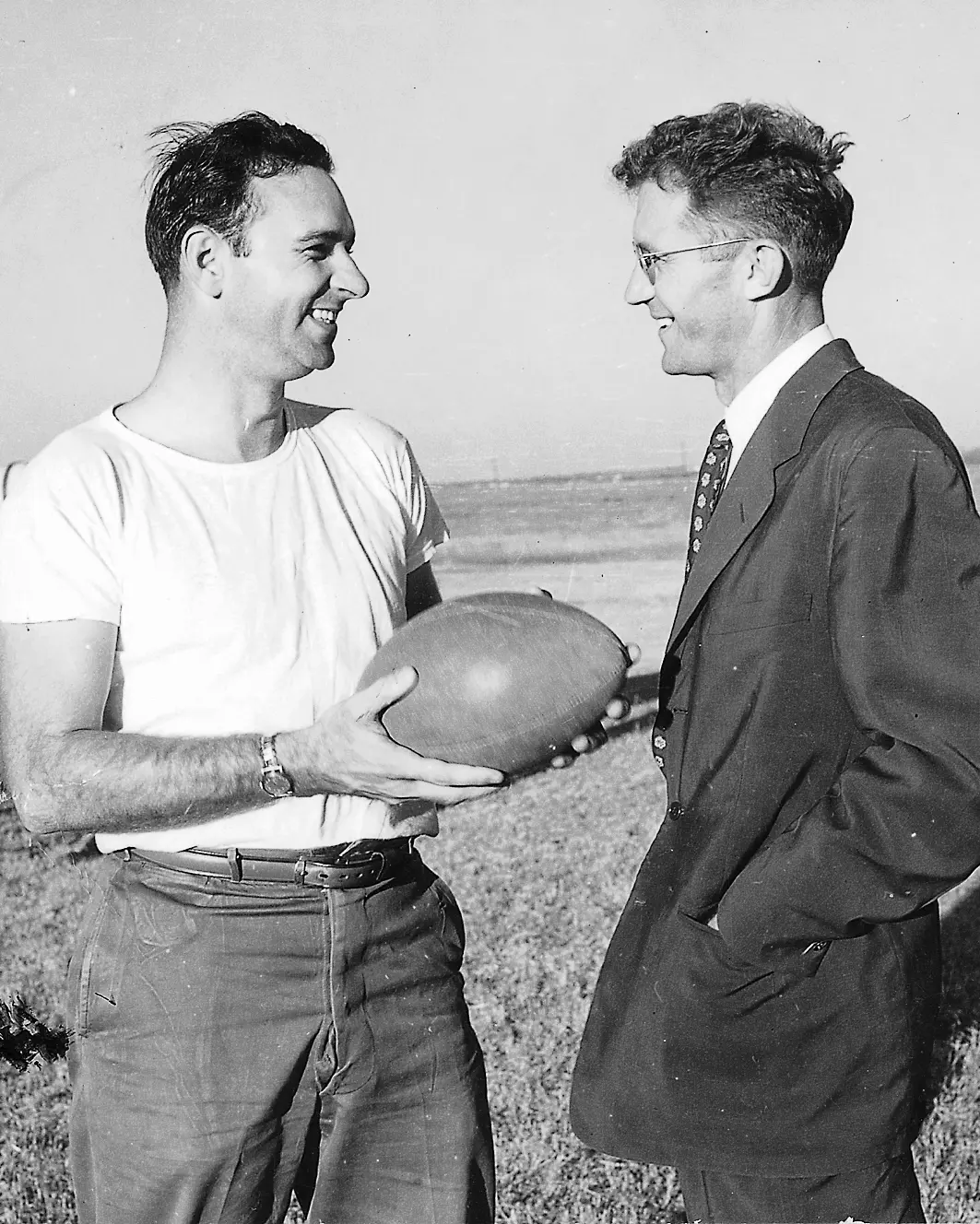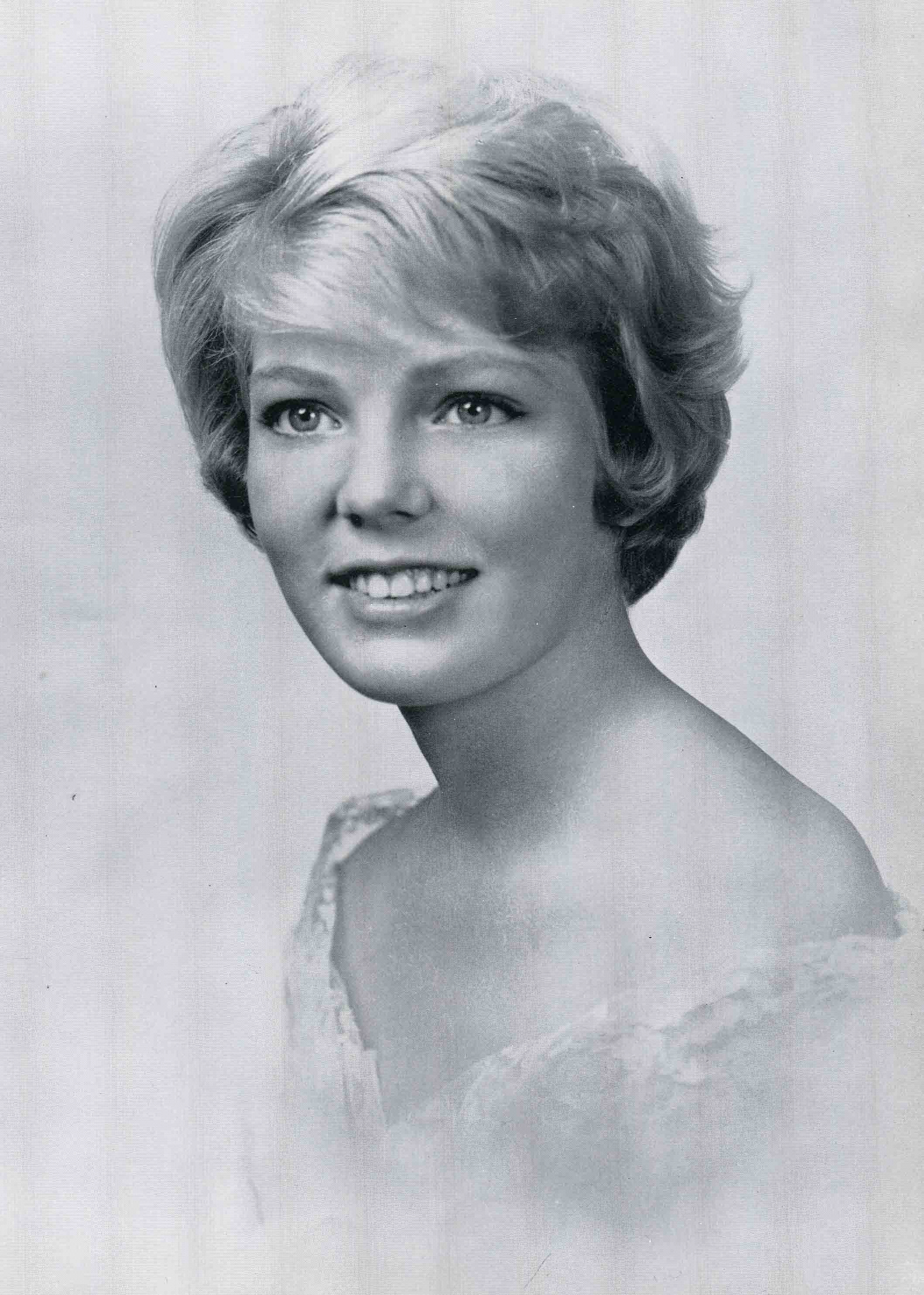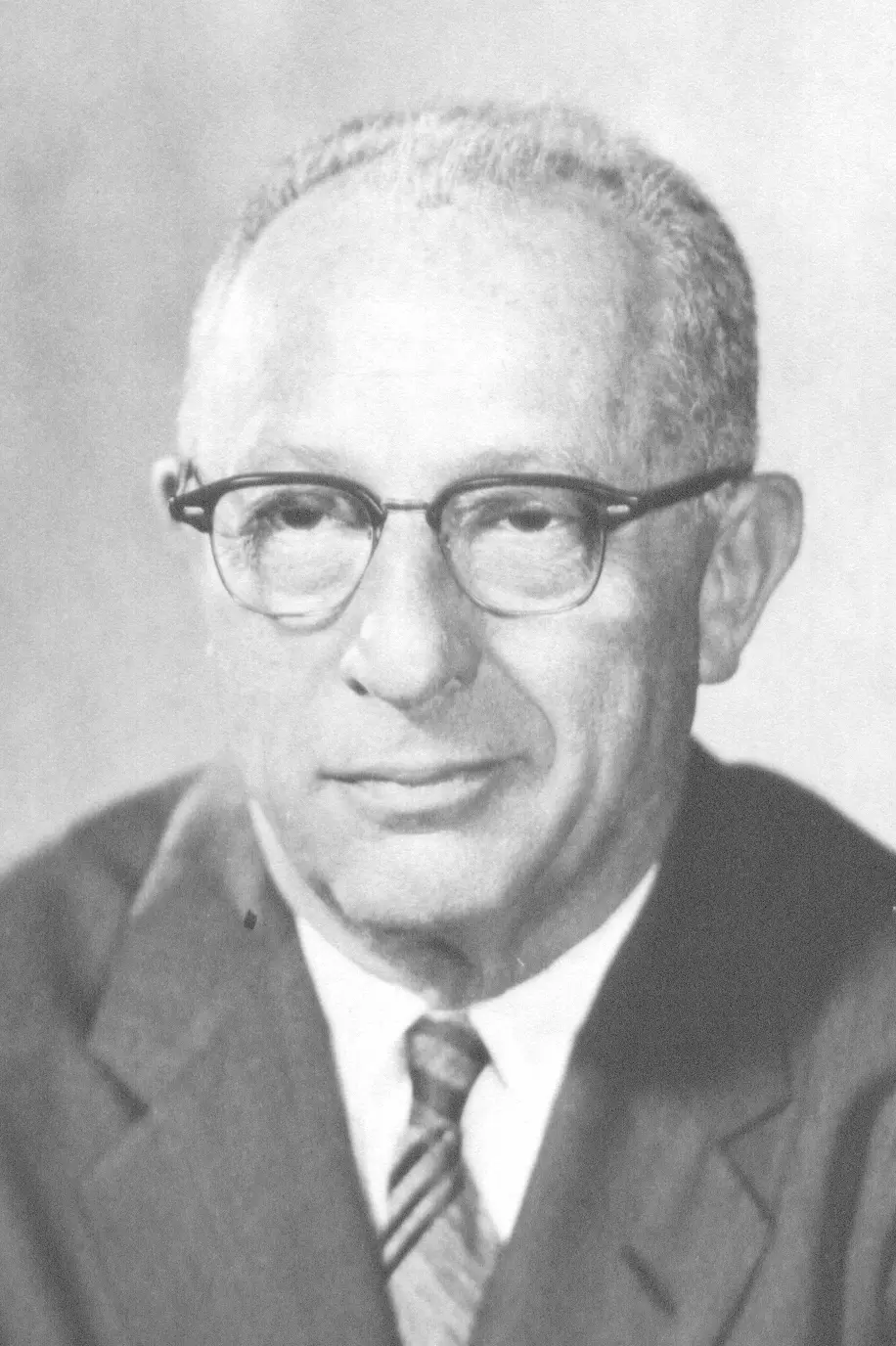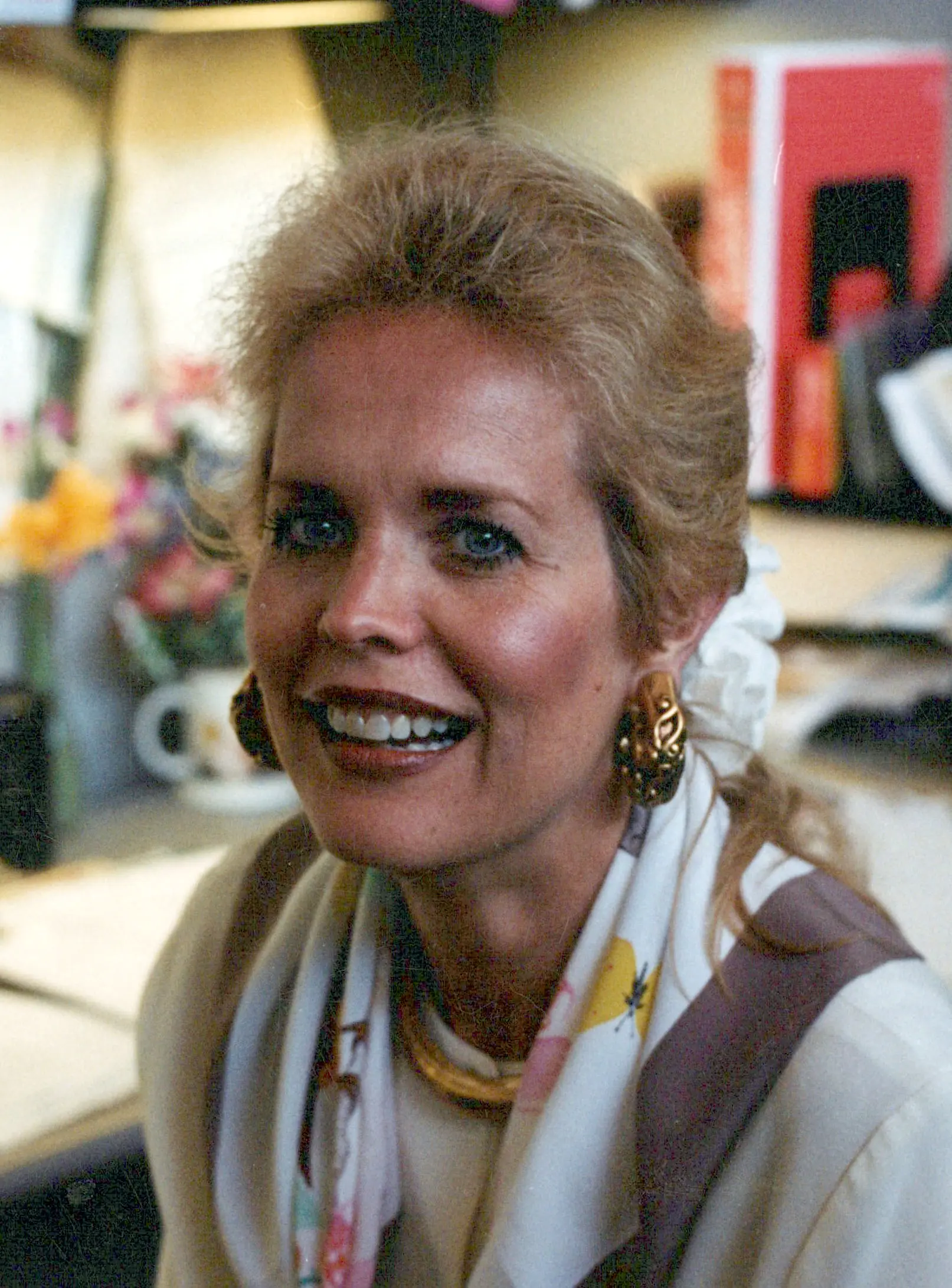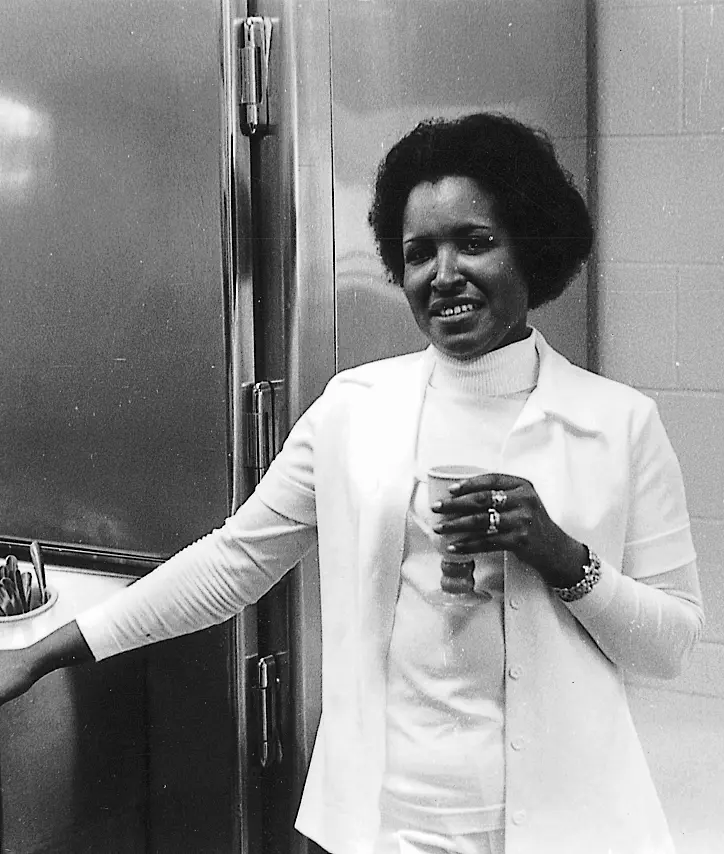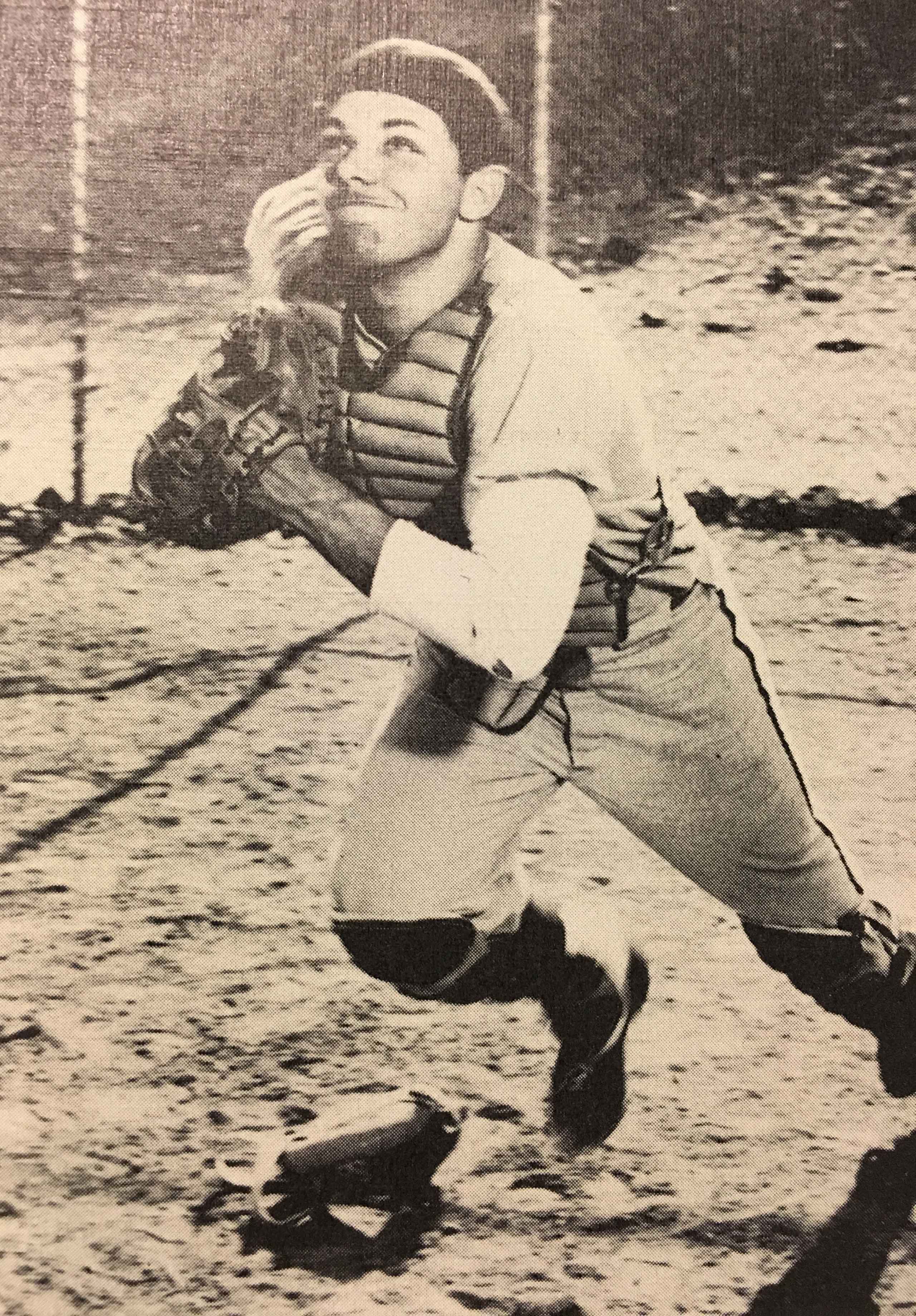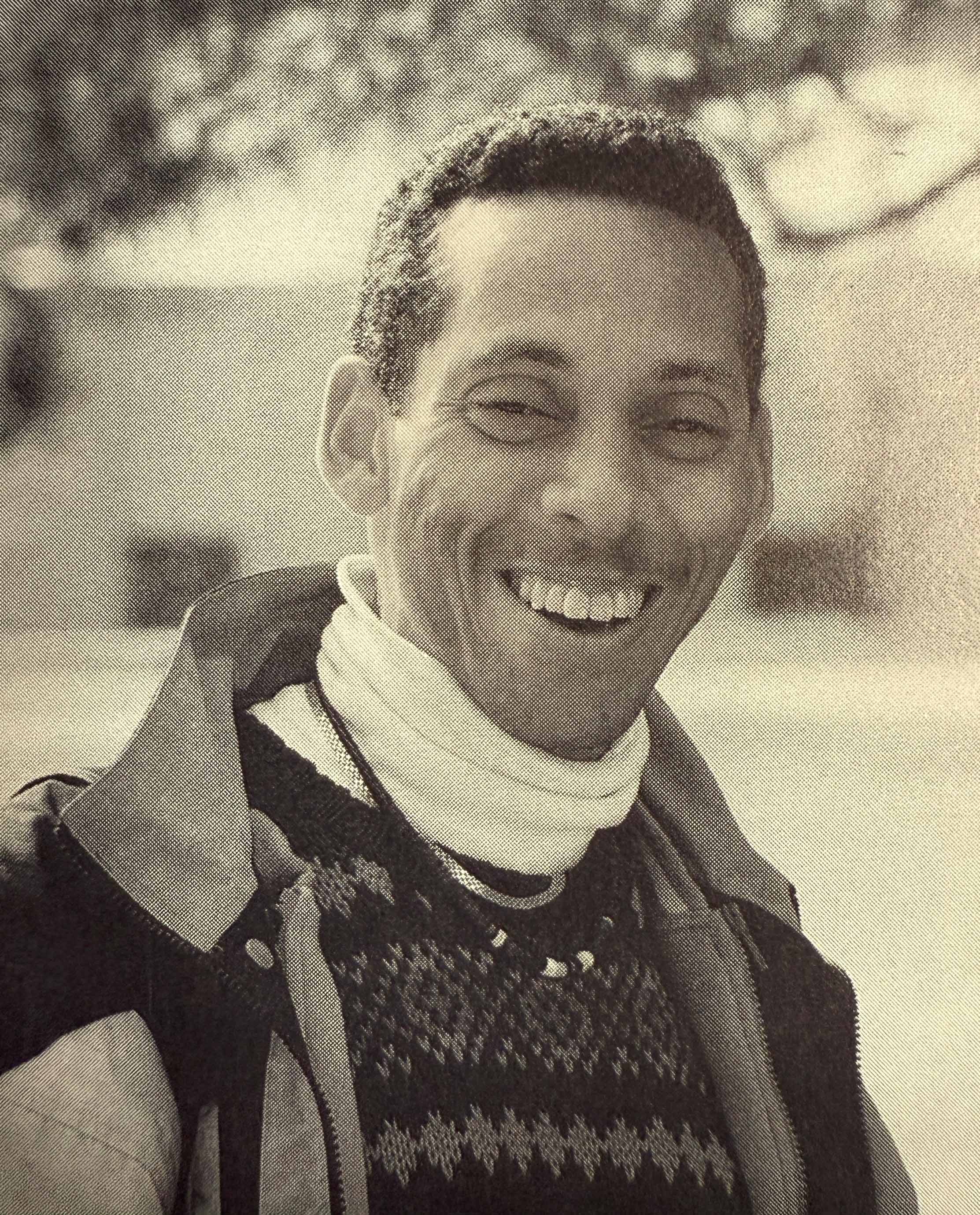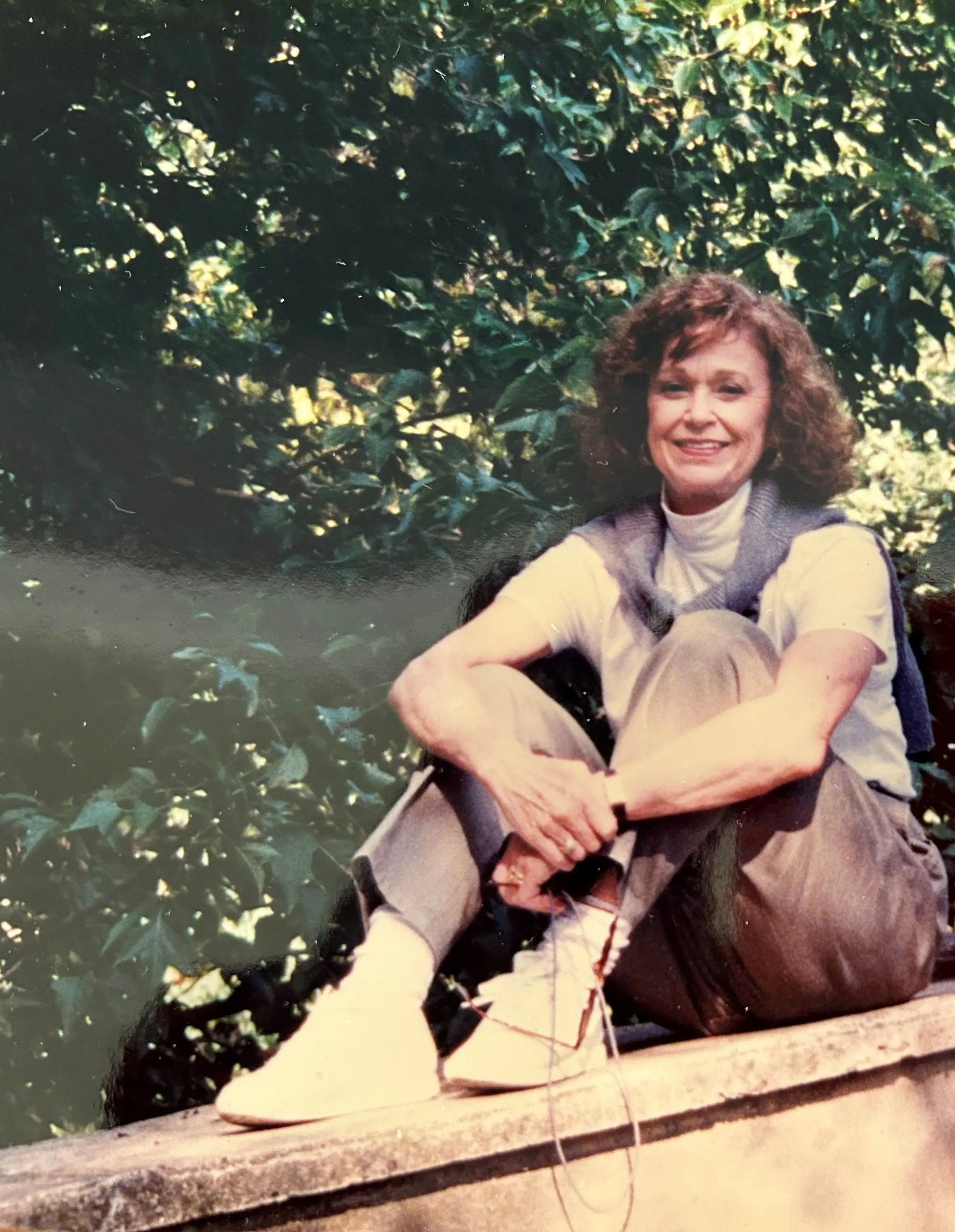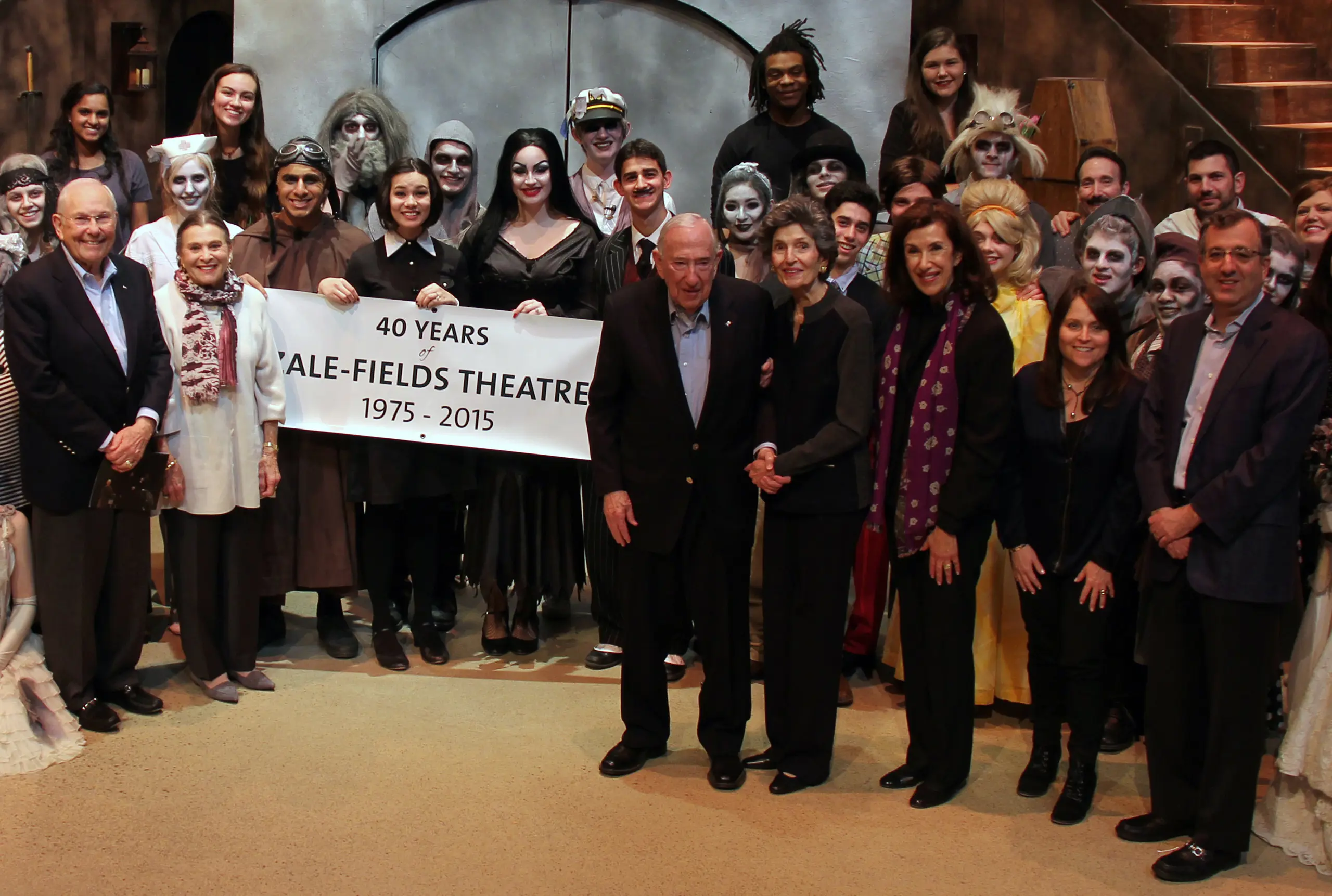The Faces of Greenhill
Throughout our 75 years, Greenhill has been shaped by remarkable individuals whose leadership, vision, and dedication have left a lasting impact. This page celebrates those individuals – they have built our foundation, inspired generations, and exemplified what Greenhill stands for.
As you explore the stories below, we invite you to reflect on how these individuals helped shape the legacy we carry forward – and how their influence lives on in our daily life as a school.
Know someone who should be featured? We’re always looking to expand this collection. If you’d like to nominate a figure from our history who made a meaningful impact, click here to submit their name and story.
In this section
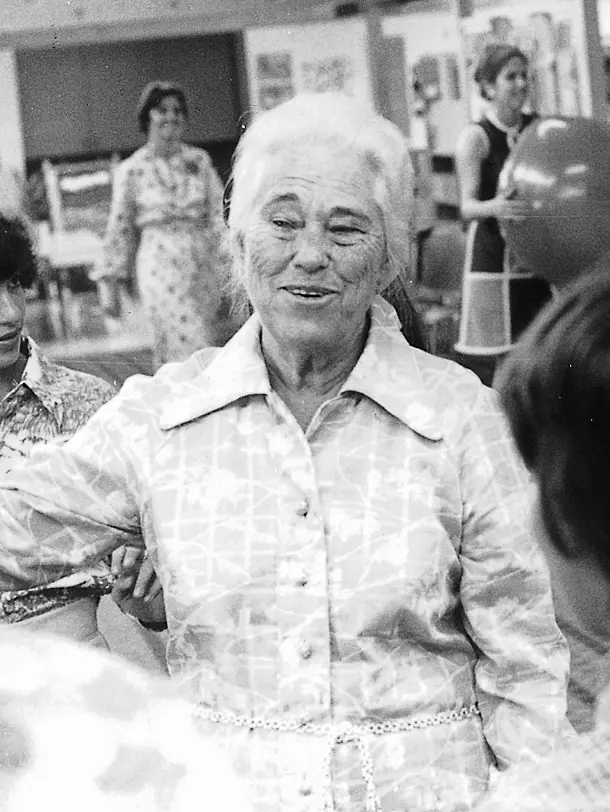 |
For years, Agnes Baldwin operated a well-respected preschool in Dallas, and in January 1951, Bernard Fulton convinced her to move her enterprise to the Greenhill campus, beginning a collaboration that thrived until her retirement in 1978. A staunch believer in creative play, Baldwin’s preschool revolved around exploration, the arts, and myriad games of the imagination. Her students recall her finger paints, musical instruments, giant boxes of dress-up clothes, ribbons, boas, and those memorable dramas – The Nutcracker and Stone Soup. One parent painted Baldwin’s early childhood philosophy to a T: “Mrs. Baldwin was so interested in her students – not that they would learn their ABCs when they were three years old, but that they chased butterflies and did all the things that children really need to be happy with themselves.” Baldwin was recognized as a Heart of the Hill Hero in 2002, having group Blue 2 named after her. |
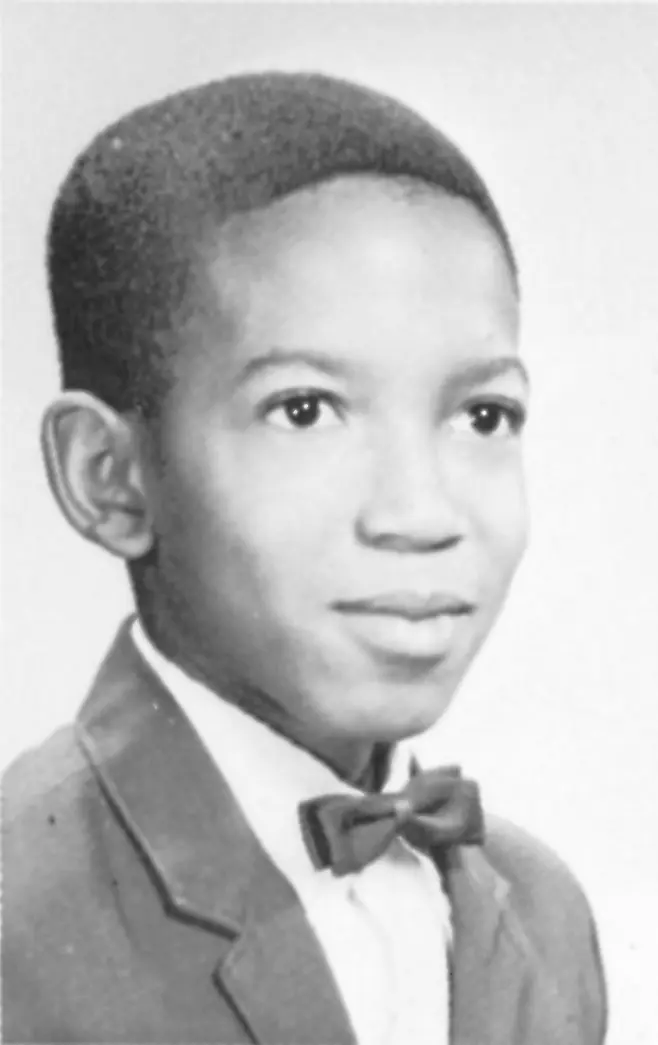 |
The racial integration of Greenhill was hardly a dramatic event, according to those who were there at the time. When young George Birdsong enrolled in fifth grade at Greenhill in 1967, it was a natural extension of the school’s mission. “Nobody made a fuss about it,” remarked Bernard Fulton. “But I did say to the faculty, ‘Don’t forget that when he walks through that door, he’s a Greenhill student, period.’” Looking back on his role as a pioneer, Birdsong remarked that the educational opportunities were more important to him than just his role in integrating the school: “Attending Greenhill has changed my life in a significant way, much more than being the first African American student. It was a total life-changing experience. There was so much encouragement to explore things intellectually at Greenhill. Greenhill has opened up so many possibilities… and that’s because of the people who were there with me – not just the teachers, but also the other students.” Birdsong was recognized as a Heart of the Hill Hero in 2011, having group Gold 6 named after him. |
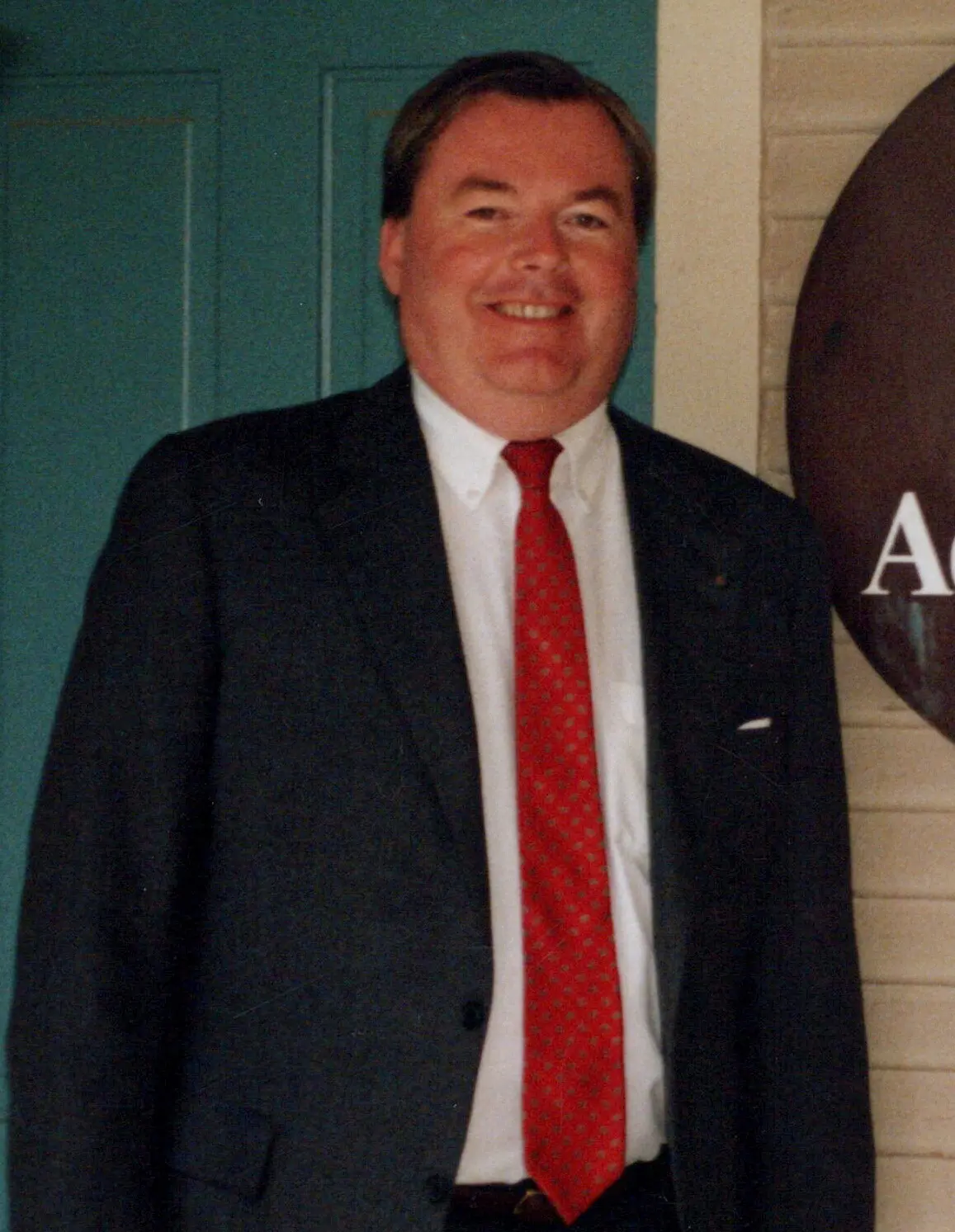 |
Steve Blanchard arrived on the Hill in 1971 to teach Middle and Upper School history and soon learned that Greenhill job descriptions are rarely that lean or simple. In short order, he was coaching cross country, tutoring students, and driving buses. His all-in style almost immediately inspired Bernard Fulton and Phil Foote to tap him to lead a new initiative with the Boys Clubs of Greater Dallas. The Independent School Project (ISP) grew as a partnership out of shared goals between the Boys Clubs and Greenhill – to “work together cooperatively to serve socioeconomically disadvantaged children identified as having exceptional academic abilities and a desire for greater academic challenge.” Blanchard spearheaded the success of the ISP program, and decades later, van-riders from that era still lavish him with grateful praise for his mentorship. Blanchard became Director of Admissions in 1982, where he presided over a time of tremendous growth in the School’s history. Blanchard was recognized as a Heart of the Hill Hero in 2025, having group Green 10 named after him. |
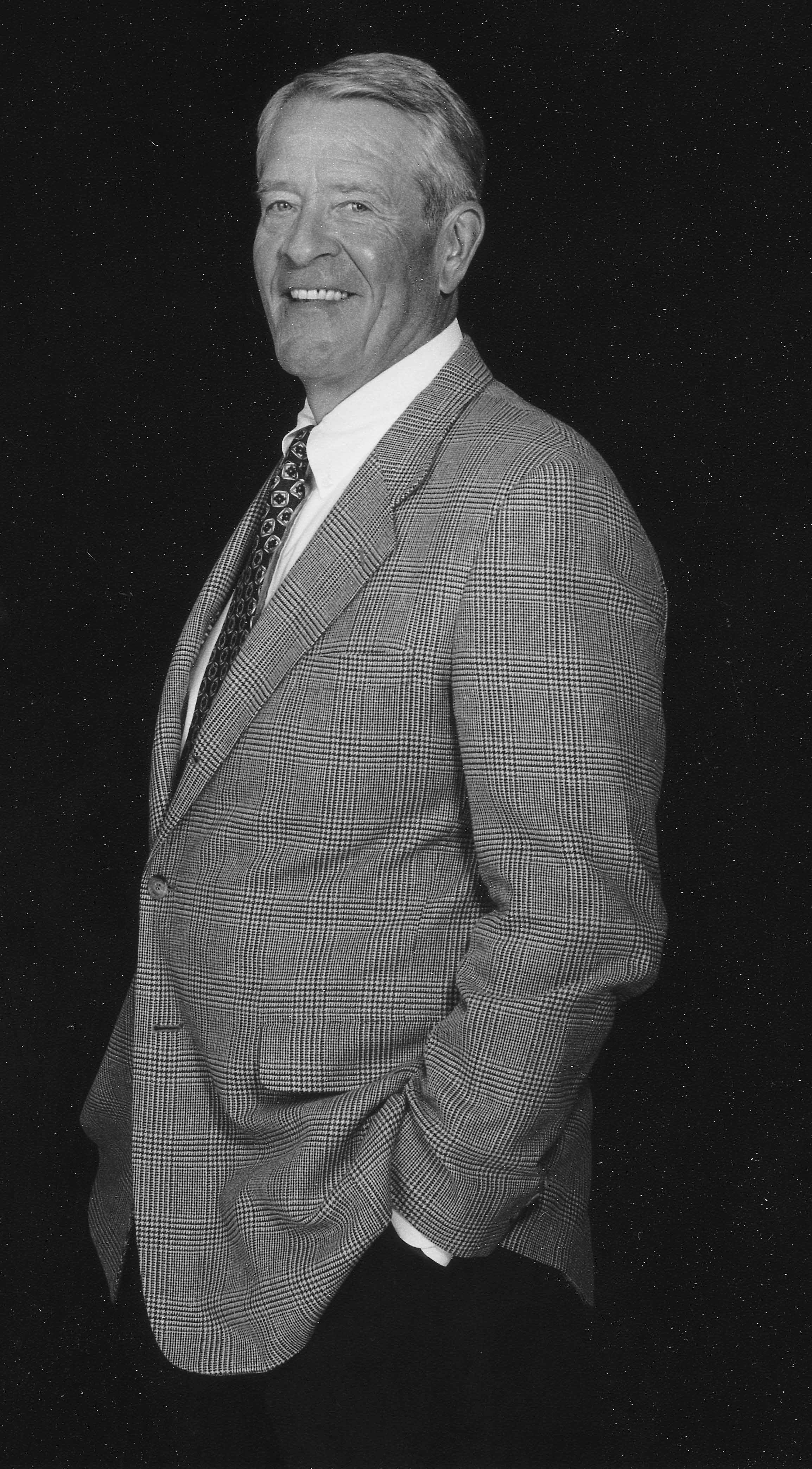 |
Peter Briggs was named the third Head of School at Greenhill in the fall of 1992. His eight-year tenure kicked off with the Reach for the Stars capital campaign, which funded the new Levy Middle School and Three Chimneys buildings, the renovation and expansion of the Agnich Science Center, and the repurposing of the existing Levy Middle School as the new Fine Arts Building. Briggs also oversaw changes to division schedules, programmatic and organizational changes that strengthened the authority and accountability of the division heads, and commissioned a committee to standardize the school’s image, which resulted in the first published Graphic Standards and Style Manual for Greenhill. In the spring of 1999, Briggs announced his retirement and was met by a standing ovation in recognition of his many accomplishments. Greenhill honored Briggs at Homecoming in 2000 by dedicating the Briggs Clock Tower located in the Foote Quadrangle. Briggs passed away on July 25, 2014. |
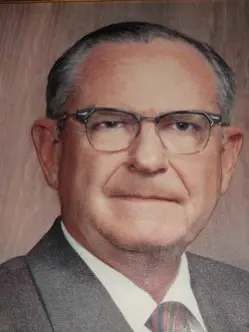 |
When Bernard Fulton needed a place to build his school – and a loan with which to launch the enterprise – he visited legendary Dallas land baron and philanthropist, W.W. Caruth, Jr., to seek his counsel. Fulton explained that he was having no luck procuring a loan with his limited resources, and Caruth wasted no time in addressing the matter: Caruth agreed to lease the new school 10 acres of land on the northeast corner of Walnut Hill and Hillcrest, adjacent to Hillcrest High School and a water reservoir, for $100 per month. So taken was Caruth by Fulton’s vision that he returned the first rent checks and simply agreed to loan the school the land, rent-free, as long as it was needed. For nine years, Greenhill benefitted from Caruth’s stunning generosity as it established itself as a first-rate school. Two of Mr. Caruth’s sons – William ’55 and John ’64 – graduated from Greenhill. Caruth was recognized as a Heart of the Hill Hero in 2014, having group Blue 8 named after him. |
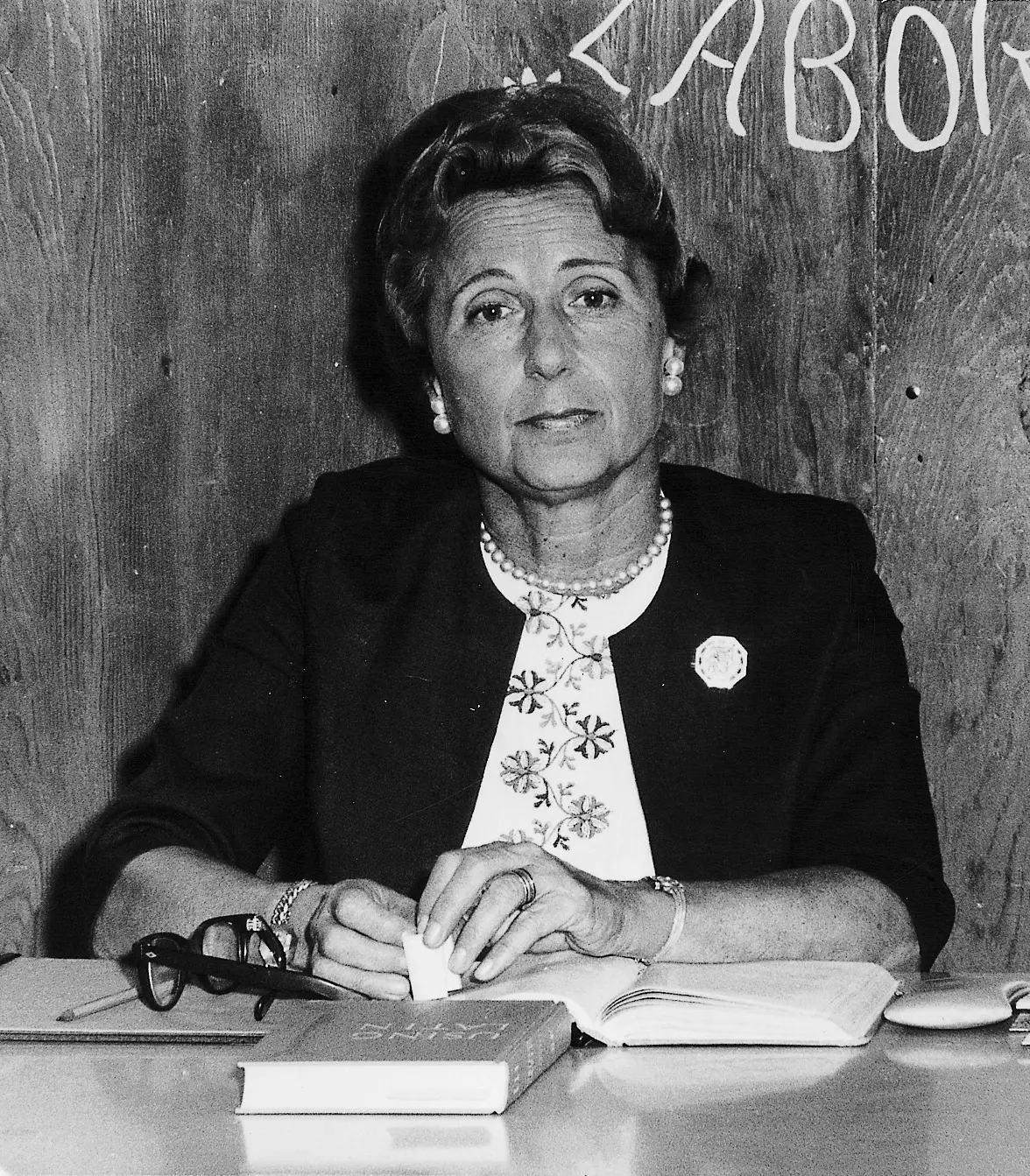 |
The road to Greenhill was an amazing adventure for Poland native Kate Cecil. The mother of future teacher Christine Eastus, Cecil had survived the Nazi blitzkrieg and experienced life on three continents by the time she arrived at Greenhill in 1957. Following the war, the Cecils moved to the United States, where Kate held teaching positions at McMurry University and Hardin-Simmons University. In addition to teaching German and Latin at Greenhill, Cecil and her students founded the Echo Latin Club, a service organization that instilled the ethic of doing for others as a primary value of the school. Her students recall her accent, her stern yet humorous admonitions, and the twinkle in her eye. Cecil set a standard for personal responsibility that shaped the ethos of Greenhill forever. The Kate Cecil Award is given at graduation to the senior who renders the most outstanding service to the Dallas community. Cecil was recognized as a Heart of the Hill Hero in 2006, having group Blue 3 named after her. |
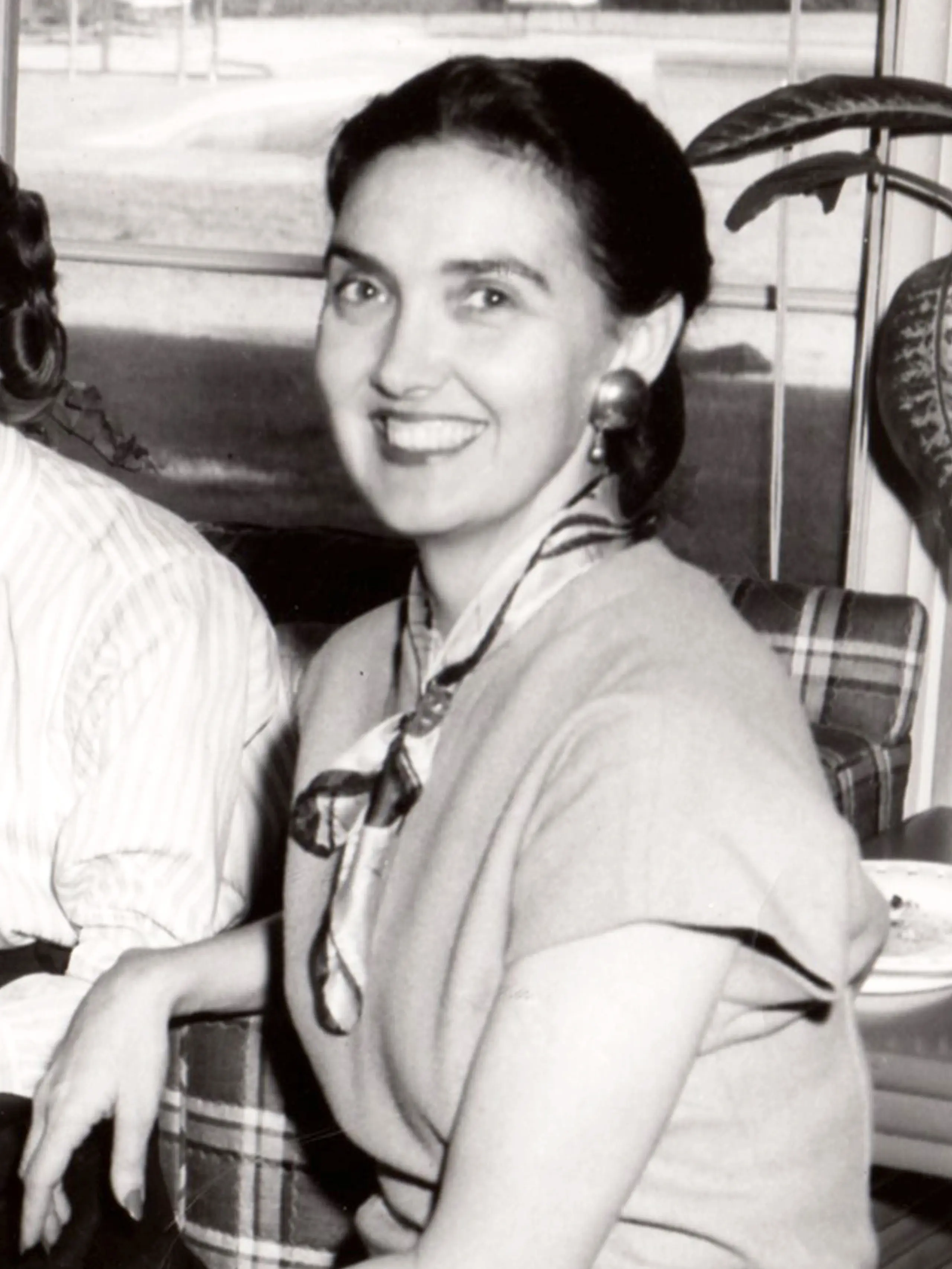 |
Jackie Conlee was hired in 1954 to teach high school English, and she quickly made her mark as a charismatic and beloved teacher. That same year, Bernard Fulton and Charles Hodge Jones, the school’s curriculum director, decided to separate grades 5-12 into distinct divisions (Middle and Upper Schools), each with its own leadership. By 1958, Conlee was tabbed to be the Head of Upper School, and for a time, all four of Greenhill’s divisions were led by women (PS – Agnes Baldwin, LS – Helen Misura, MS – Mildred Fulkerson, US – Jackie Conlee), a rarity in the independent school world of the 1960s. During her tenure at the helm of the Upper School, Greenhill joined the Southwest Preparatory Conference, held its first Homecoming (in the fall of 1963), introduced computers into the curriculum, and moved to the “new” campus in Addison. Conlee was recognized as a Heart of the Hill Hero in 2021, having group Red 6 named after her. |
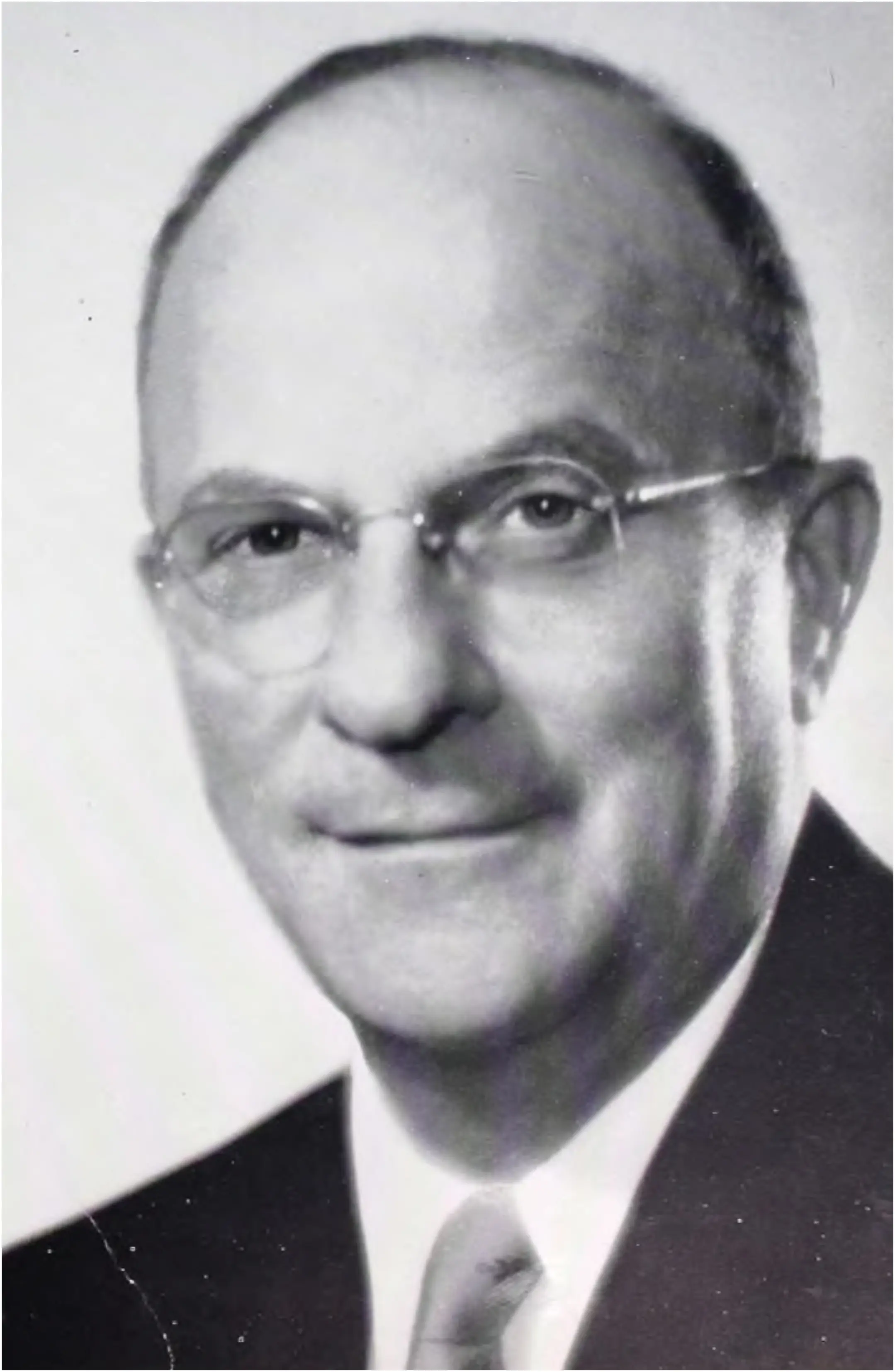 |
In 1959, during his tenure as Board Chair, Jerome Crossman recognized that Greenhill had outgrown its 10-acre campus and that its future viability required a new and significantly larger location on which to grow. Crossman was the first to identify an 83-acre turkey farm in Addison as a potential spot, despite the fact that the land was surrounded by small ranches, far beyond most of the settled neighborhoods in Dallas, before the construction of either LBJ (635) or the Dallas North Tollway. Crossman and fellow board members Fred Agnich and Frank Schultz purchased the land, shortly thereafter turning over the deed to the property to the school. In the aftermath of the devastating fire in 1963, Crossman found himself with Agnich at a watershed board meeting, forced to determine the future of the school: Agnich threw down the gauntlet to the board, while Crossman blocked the doors to the meeting room – the board would either vote to embark on a campaign to build the school’s first permanent, bricks-and-mortar buildings or would cease its operation. The first two edifices to come out of the process – Agnich Science Building and Crossman Hall – honored the courageous and unflinching resolve of these two extraordinary leaders. Crossman served on Greenhill’s board from 1958 until his death in 1970. Crossman was recognized as a Heart of the Hill Hero in 2017, having Green 9 named after him. |
 |
“Greenhill was my beloved school,” explained eighth-grade reading evangelist Perry Degener. “It was my dream job, right out of Kenyon College: figuring out how to unlock ways for my eighth-grade students to get the most enjoyment from the books they were reading.” And for 18 glorious years, Degener did exactly that. Never without butcher paper handy for class brainstorming, Degener honored his students’ ideas and stoked their powers of imagination, invariably sporting chalk or marker on his upper lip from his own musing with a writing utensil in hand. Degener also served as eighth-grade team leader and later English Department Chair. He even founded the Ultimate Frisbee team at Greenhill… and at one point was coaxed into coaching the short-lived Middle School wrestling team, but he will always be remembered – and revered – for the passionate manner in which he instilled in his young charges a love of literature. Degener was recognized as a Heart of the Hill Hero in 2024, having group Red 12 named after him. |
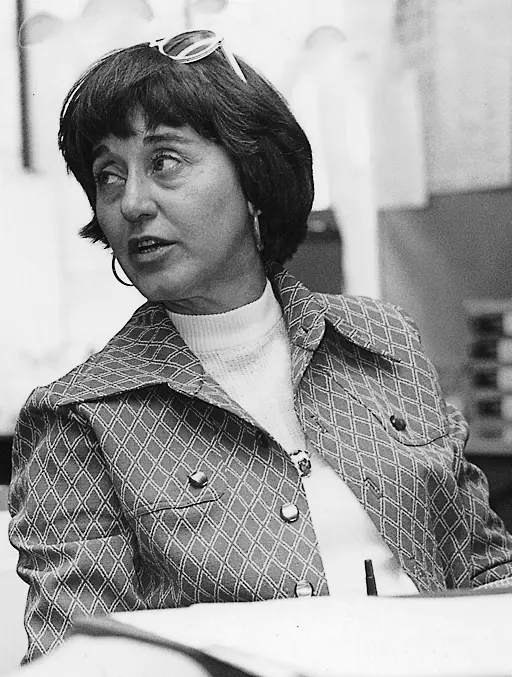 |
Estelle Dickens arrived at Greenhill in 1960 and quickly established herself as a math specialist, student advocate, testing guru, brain researcher, and parent educator. In 1976, Dickens was named Head of Lower School, a position she held for 14 years, aiming toward her goal of having “the best Lower School in the city.” She then served as Assistant Head of School, and in later years, Dickens employed her vast experience in leading the school’s learning assistance program. When she passed away in 2004, she was the longest-serving employee in the school’s history at 44 years. To honor her contributions to Greenhill, Dickens was recognized as a Heart of the Hill Hero, having Gold 1 named after her. |
 |
Beloved as a sort of mad scientist and whirling dervish of excited energy at the same time, John Dunn left his mark on a generation of young Greenhill scientists, tapping into their natural wonder at the world around them and catalyzing their joy in experimentation. Each year on Medieval Day, Dunn would dress as Merlin the Magician, and as Head of Middle School Lucinda Carter described, he “was a pied piper to his students.” His Rocket Club fired the engines of fifth-grade imaginations with projectiles flying around the campus, and for years afterwards, his former students would witness the launches from afar with wistfulness and fond memories. Always in a short-sleeved shirt, tie, and white lab coat, Dunn moved through the Agnich Science Building with a twinkle in his eye and – as colleague Peggy Norvell Turlington ’75 recalled – "the most mischievous giggle coming from a big man!" Dunn was recognized as a Heart of the Hill Hero in 2024, having group Red 10 named after him. |
 |
Sally Dunning first came to Greenhill in 1982 as a parent when she enrolled her daughter, Meredith, in kindergarten. Within two years, she found herself serving on the Board of Trustees, eventually chairing the board from 1990-92. After completing her term as board chair, Dunning was tapped to lead the Reach for the Stars campaign, which would transform the campus with a new administration building, a re-purposed fine arts center, a renovated Agnich Science Building, a dramatic new “front door” which moved the main entrance from Midway Road to Spring Valley, and the spectacular new Levy Middle School. Dunning was recognized as a Heart of the Hill Hero in 2007, having group Gold 4 named after her. |
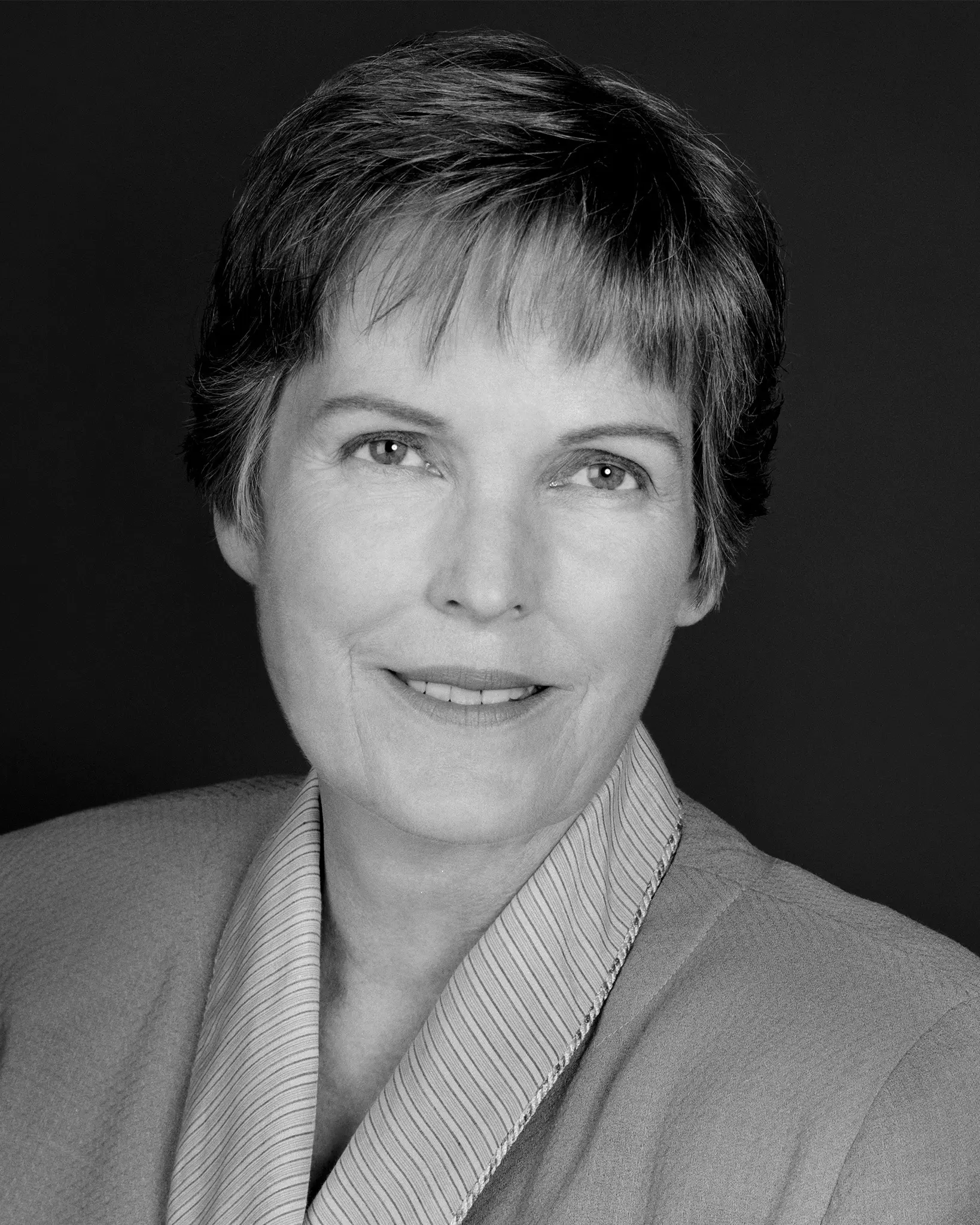 |
Sally Estes, parent of Risser '83 and Kris '80, served on the Board of Trustees from 1976 to 2012, and served as Board Chair from 1983 to 1986. In the mid-1970s, Sally is credited for starting what is now known as Employee Appreciation, by spearheading an entire Teacher Appreciation Day designed to thank the teachers for their dedication to the students. More notably, as Board Chair, Sally signed a 99-year land-lease agreement with Trammell Crow Company on January 7, 1985. The lease of the parcel of land adjacent to what is now Midway Road was the culmination of a two-year process where the Land Lease Committee evaluated proposals from a number of firms. The lease gave the School a source of long-term income to bolster the School’s finances, making it more competitive with other schools in town. Later in 1997, Greenhill sold the lease to Cardinal Capital Partners, Inc, which more than doubled the School’s endowment at the time of the sale. Sally’s leadership grounded the School financially, ensuring that it would continue to serve students for years to come. To honor her contributions to Greenhill, Sally was recognized as a Heart of the Hill Hero, having Red 7 named after her. |
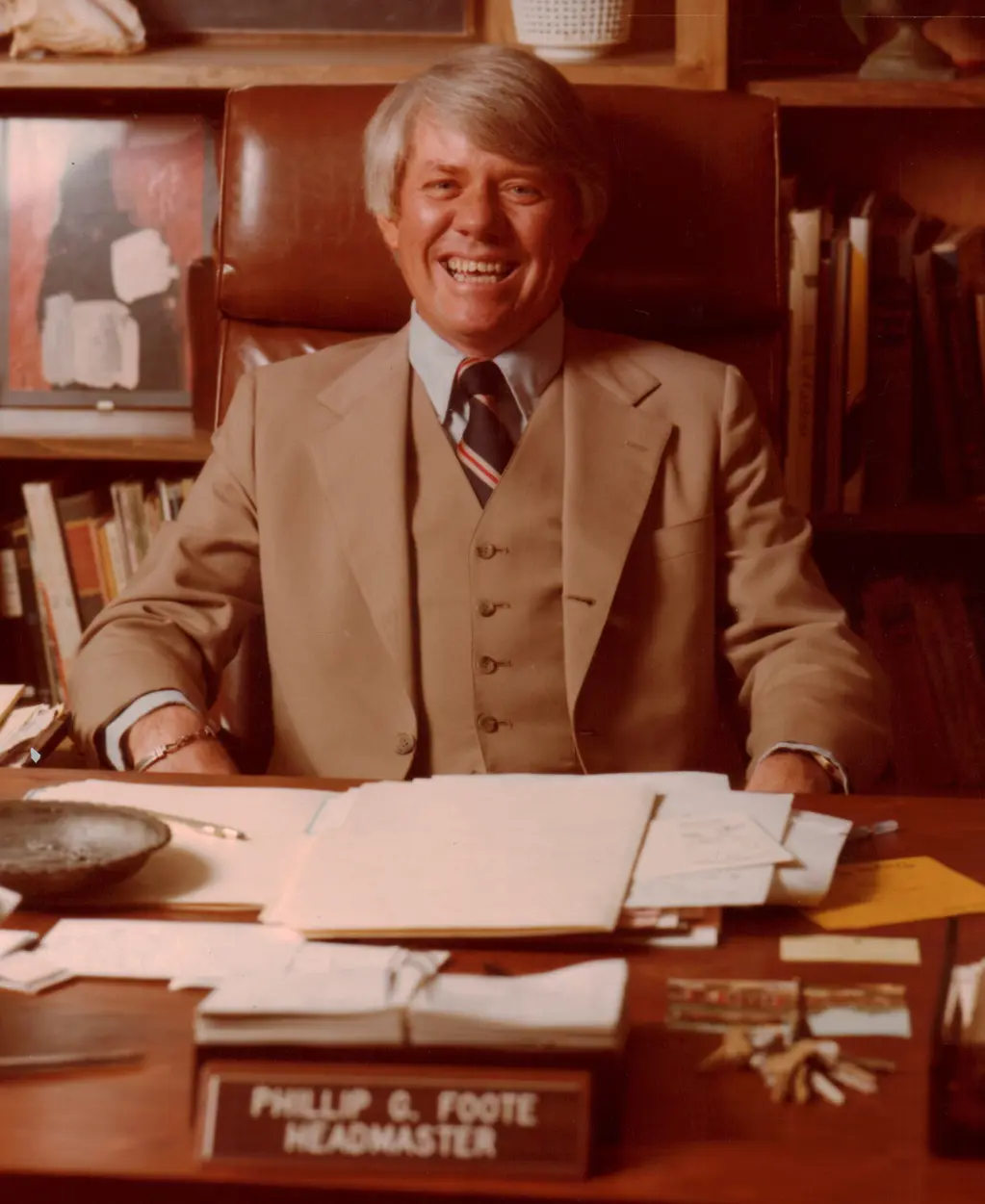 |
Philip G. Foote spent 23 years at Greenhill, first serving as Head of Lower School, then Head of Lower and Middle School, and finally assuming the role of Head of School from 1976 to 1992. He advanced Fulton’s vision by growing enrollment from 984 to 1,210, increasing the number of full-time faculty members from 95 to 135, and establishing financial stability for the school by leading the Greenhill Park land-lease initiative, which solidified and grew Greenhill’s endowment. He was also known and loved for wearing red-plaid pants and playing the piano during the holidays. |
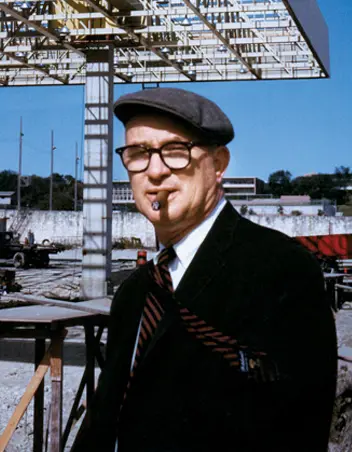 |
When Greenhill moved to its new Addison campus in 1959, board member Fred Agnich immediately engaged internationally renowned architect O’Neil Ford of San Antonio to help sculpt a campus out of the hardscrabble prairie. A student of the Arts and Crafts Movement, Ford sought to create a Texas aesthetic. Ford drew a campus master plan for Fulton and designed the first four buildings on campus: the Agnich Science Building, Crossman Hall, Montgomery Library, and Cox Gymnasium, establishing the architectural vernacular that has been honored in subsequent projects since the 1960s. O'Neil was recognized as a Heart of the Hill Hero in 2015, having group Gold 7 named after him. |
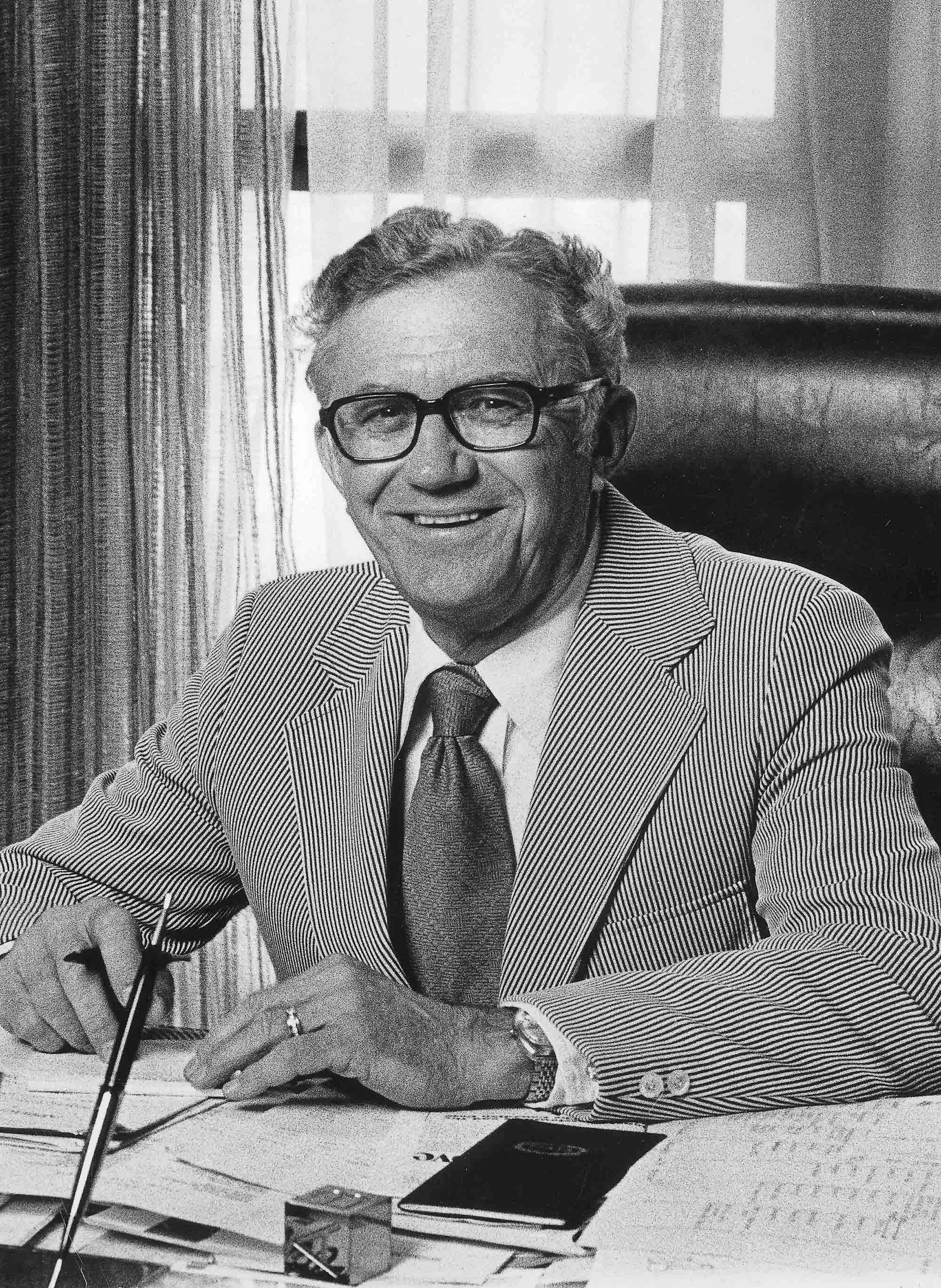 |
Helen and Bernard Fulton are the two most well-known founders of Greenhill School. He demonstrated his energy, versatility, and commitment to education in all guises by serving as chairman of the Addison Independent School District's school board for 10 years. In 1950, he became the founding headmaster of Greenhill School. From 1950 to 1976, Fulton served as the founding headmaster of Greenhill School, where he attracted strong teachers and secured the support of families and board members. He also pioneered the concept of open-space education and the developmental primer program in the Southwest and proved that his vision of independent co-education represented the wave of the future for the region. When he retired from Greenhill, he was recognized for his unwavering commitment to his vision and for his incessant drive to improve, never allowing the school to rest on its laurels despite its growth (from 62 to 1,002 students) and its solid position as the top coeducational independent school in the area. |
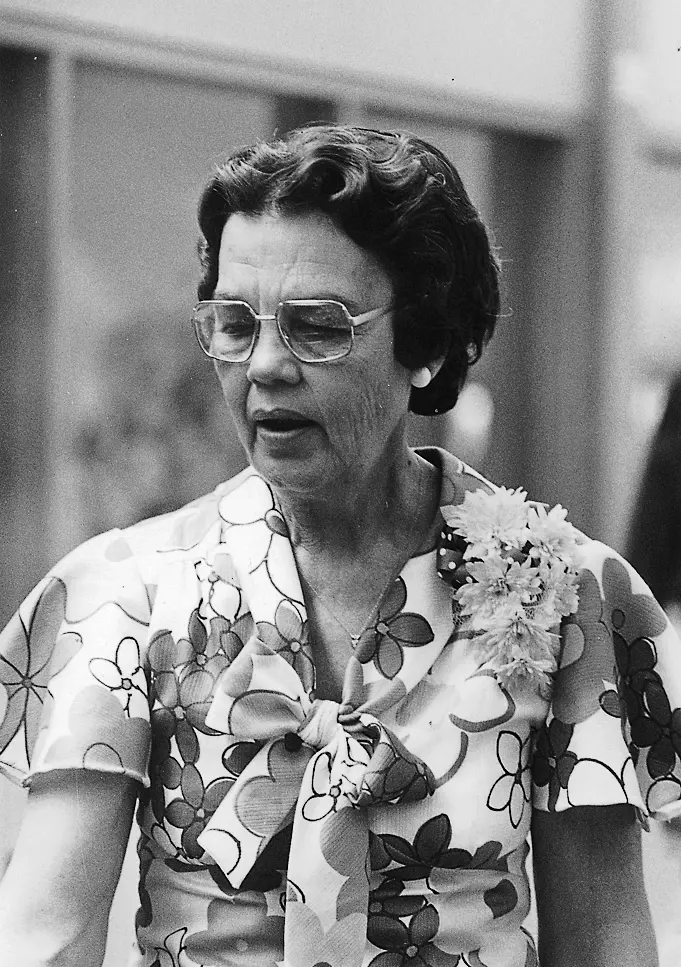 |
Helen and Bernard Fulton are the two most well-known founders of Greenhill School. Described by Estelle Dickens as a “behind-the-scenes person,” Helen poured herself into the monumental task of carving out a dream from the impossible hardscrabble of the North Texas prairie. From bookkeeping to answering phones to making lunches to substitute work to sewing tote bags, no task was too menial for her. Though not a trained teacher, Fulton was a keen observer of children and a tireless researcher of educational methods, and it was her initiative that brought the Cuisenaire Rods and the Orton-Gillingham reading program, among other ideas, to Greenhill. She also organized and led the annual Greenhill Summer Studies Abroad Program, a humanities-based summer travel and study experience for Upper School students. But perhaps her overarching achievement lay in her creation of a carpool system that spanned the city and provided the vital means for getting students to and from Greenhill during the early years. Quite simply, without her transportation orchestration – and her daily driving rounds – there would not have been students in the school. |
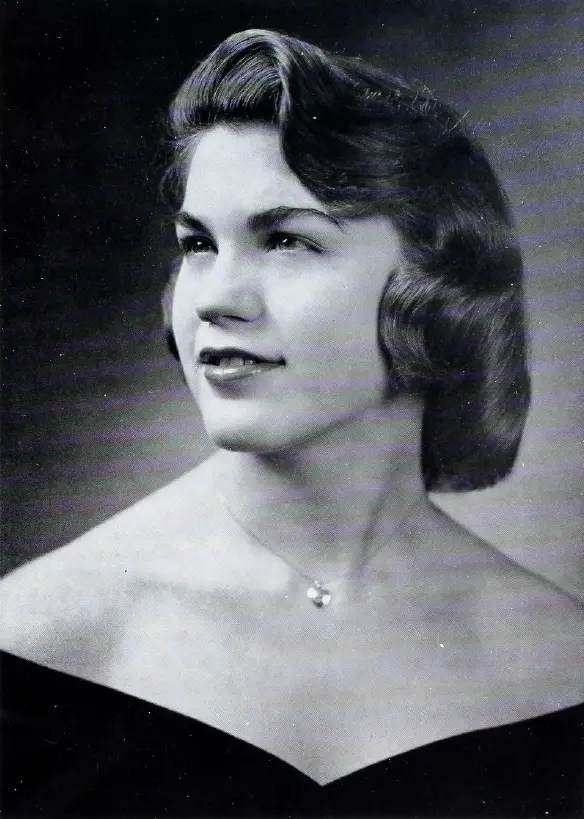 |
Molly Fulton Seeligson, daughter of founders Helen and Bernard Fulton, was one of the original 62 Greenhill students. As a student, she was deeply involved in the Greenhill community – she served as head cheerleader, Homecoming queen, and joined myriad clubs, including riding club, bridge club, glee club, student council, and even the youth council for traffic safety. She earned multiple accolades during her time as a student, including the Ronnie Freeman award, DeLay Service to Greenhill award, the Fulton award, and Valedictorian. After Greenhill, she followed in her parents’ footsteps with a career in education. She led The Clear Spring School in Eureka Springs, Arkansas, served as Head of School at the Fulton School, and held the role of Director of The Eugene McDermott Scholars Program at the University of Texas at Dallas. Through the years, she maintained a strong relationship with Greenhill, volunteering while her son attended the School and serving on the Board of Trustees. In recognition of her longstanding commitment to the School, the Board unanimously voted to bestow her with the unique honor of Life Trustee in May 2015. A few weeks later, she received the Distinguished Alumna Award from the Greenhill Alumni Association. |
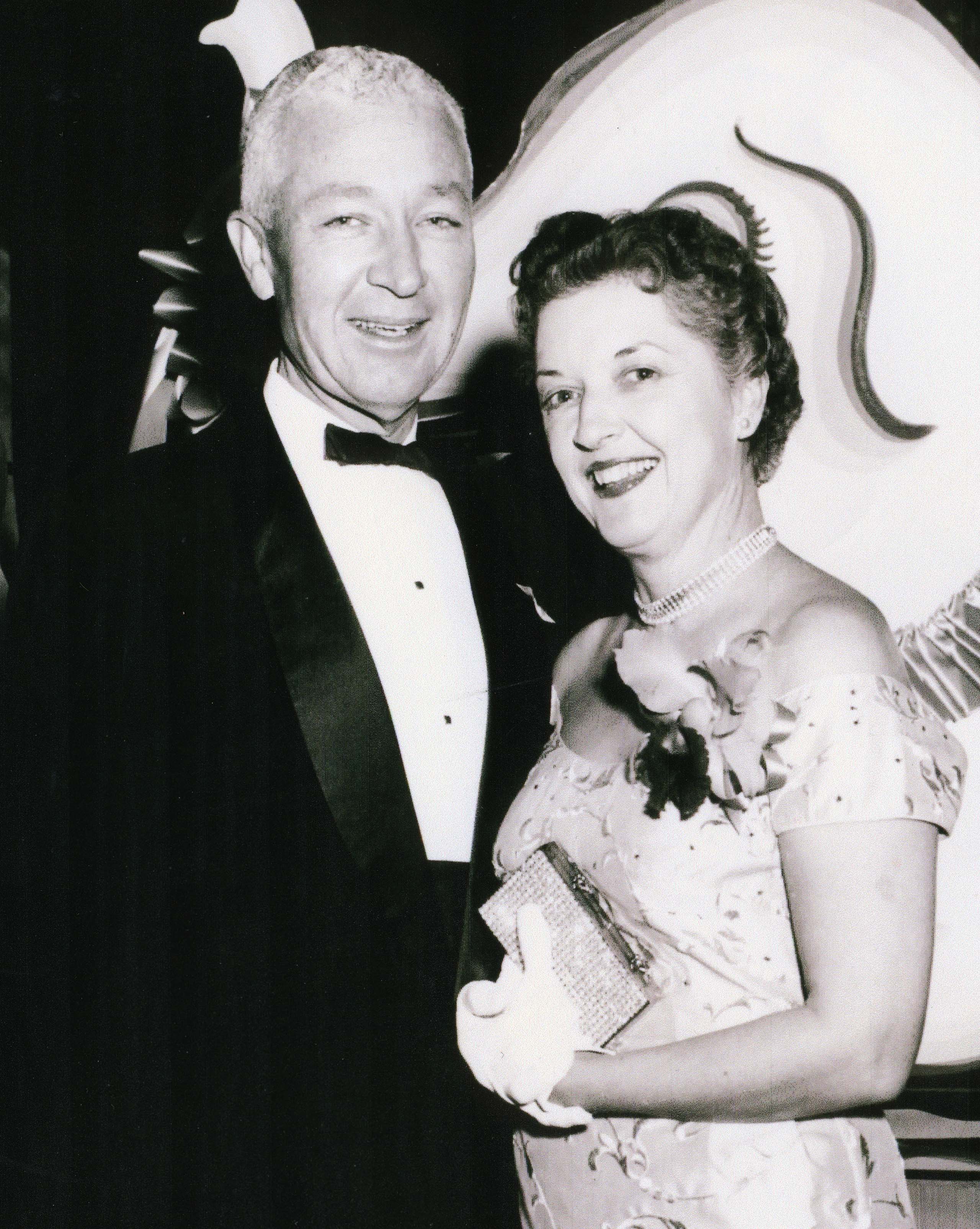 |
Doris and Leonard Green had a son, John, who had been in the local public schools, and they were quite interested in finding a better school for him. Leonard Green, Doris’ husband and president of Dr. Pepper at the time, was an influential presence in Dallas, and he was a man of action. The idea of a new school having taken root, Bernard Fulton needed a Board of Directors, and its chair would be a key decision. Having been with Texaco before heading up Dr. Pepper and having even served as president of the Red Cross and the Dallas Salesmanship Club, Leonard Green was willing to help the new enterprise in any way that he could. He agreed to chair the first board. All that remained was a name for the school. Fulton had originally been charmed by the name The Keystone School, and myriad other suggestions had come rolling in. One day, however, when the Fultons and the Greens drove to the new site, the landscape itself staked its claim. Noticing the grassy rise on the Walnut Hill-Hillcrest corner – a water reservoir at one time – Doris Green suggested “Greenhill.” In the context of the Far North Dallas plains, the spot did, indeed, qualify as a hill, and it was green; thus, the institution finally had an identity. On June 14, 1950, Greenhill School was incorporated by the state of Texas, and the Green family had been an integral part of that process. And later, John Green ’55 would marry Georgie Fulton ’53, uniting the two founding families for all time. The Greens were recognized as a Heart of the Hill Hero in 2009, having group Green 14 named after them. |
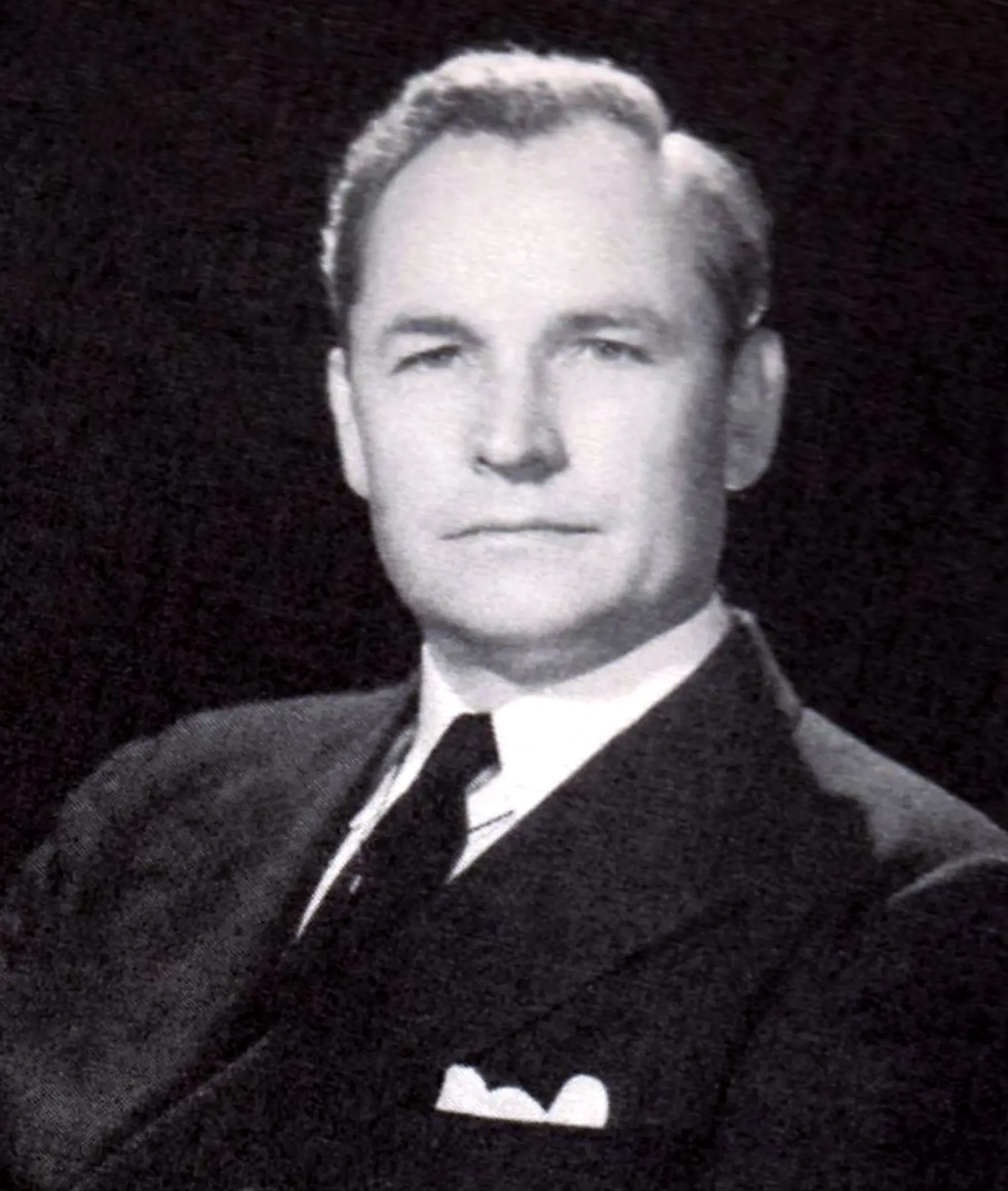 |
Lindsay Greene poured himself into the speculative enterprise that was Greenhill School in the summer of 1950, with no guarantees that the “dream” would ever materialize. His blood, sweat, and-tears equity gave the school a fighting chance, however, and before serving for two decades on the board of directors, Greene toiled side-by-side with Bernard Fulton and workers from the Texas Housing Company to literally construct the first school building from the ground up. Greene even put his money where his mouth was, signing on to cover the initial loan to build that original school building. After ensuring that the school was off and running in its first location at Hillcrest and Walnut Hill, in 1956 Greene put in motion the process for seeking a larger, more permanent campus to serve the school’s growing needs. On another occasion, Greene played matchmaker of sorts, commissioning his friend, nationally renowned composer-arranger David Guion, to craft an alma mater for the school. Guion, best known for his classic transcription-arrangement of “Home on the Range,” penned “Hail to Greenhill” to lyrics written by faculty member David Hunt, and signed it to “Sweet Ol’ Lindsay!” Greene was recognized as a Heart of the Hill Hero in 2013, having Green 6 named after him. |
 |
Scott Griggs’ led Greenhill as Head of School for 18 years. Known for his commitment to the School’s mission, Griggs enhanced campus facilities with the building of the Philip G. Foote Lower School, Child Development Center, Korenvaes Upper School expansion, Maalouf and Frankel Fields, and the Marshall Family Performing Arts Center. Griggs had a steadfast commitment to equity and inclusion, a strong connection to all employees on campus, and a desire to achieve excellence in all Greenhill programs. His vision and leadership brought Bernard Fulton’s vision into the 21st century. |
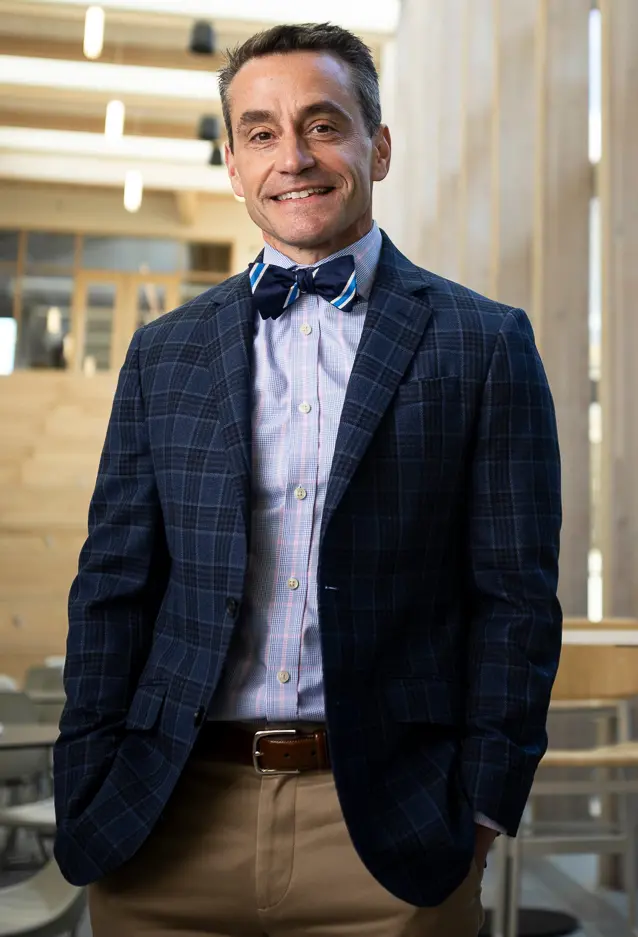 |
Lee J. Hark joined Greenhill as the fifth Head of School in July 2018. His commitment to excellence, his philosophy of education that aspires to help students become the best versions of themselves, and his keen sense of humor have enabled him to have a tremendous impact on Greenhill during his tenure. His leadership has transformed the campus with the opening of the Rosa O. Valdes STEM + Innovation Center, the renovated Levy Middle School building, the updated Philip G. Foote Quadrangle, and the forthcoming athletics facilities enhancements, including a new Athletics Performance Center. He has also overseen the creation of the School’s Design + Innovation program, the first of its kind in the region, connecting students with companies to help solve real world problems. |
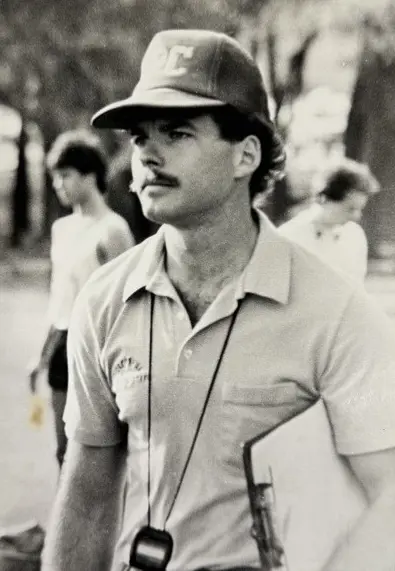 |
Possessing a booming voice that students loved to mimic, Tom Holodak endeared himself to the Greenhill community almost immediately upon his arrival in 1981, and by his fourth year, he had put together an SPC Champion girls cross country team. Toward the end of his vaunted tenure, he accomplished the rare double-championship, leading both the boys and girls track and field teams to SPC titles in 1999. In his fifth year on the Hill, Holodak launched the Greenhill Six-Mile Relay, a grueling team relay that would be run in the Texas summer heat, eventually earning its place as the annual opening to the North Texas cross country season. Holodak will be remembered for more than his accomplishments… or even his voice. His student-athletes would run through fire for him, and his devotion to them is the stuff of legend. Holodak was recognized as a Heart of the Hill Hero in 2025, having group Green 13 named after him. |
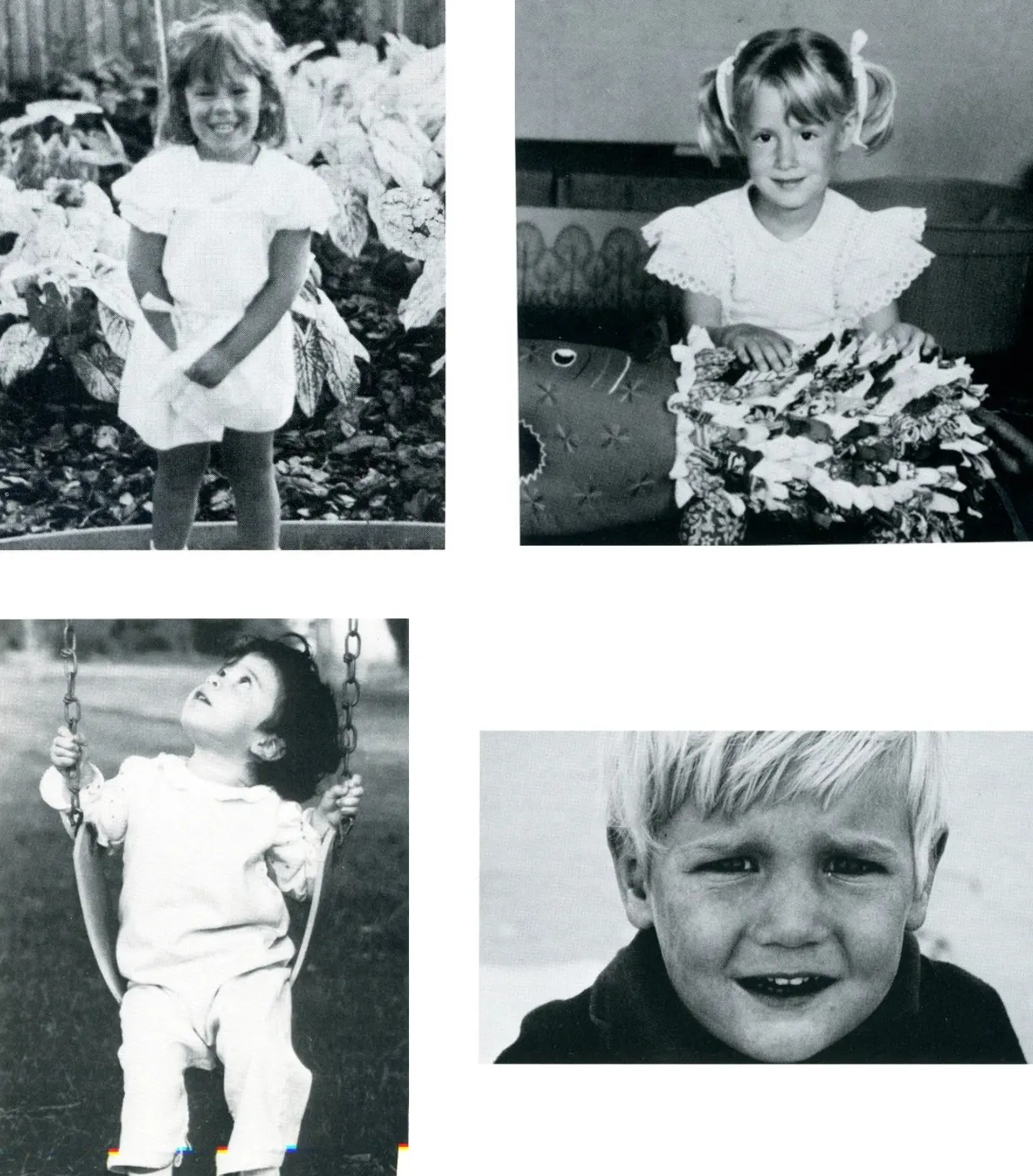 |
Early in their senior year, Heather Klein, Brooke Oberwetter, Irwin Sentilles, and Kathryn Tobolowsky, all Class of 1998, found themselves lamenting the way the school had grown and the fact that they no longer felt connected to the kids in Pre, Lower, and Middle Schools. The group sought out Assistant Head of School Tom Perryman ’81 and Director of Alumni Elaine Velvin for help. The idea was floated to create “Legacy Group” family units that would parcel out the entire community – every student and adult on campus – into 80 groups, each group comprising students from four staggered grade levels and with adults from different parts of campus. So on September 5, 1997, the first Heart of the Hill activity – an all-school pep rally – launched the HOH program, and a new tradition was born. With legacy groups remaining together year after year, students and faculty get to watch one another grow up and form bonds that can last a lifetime. The group was recognized as Heart of the Hill Heroes in 2016, having group Red 8 named after them. |
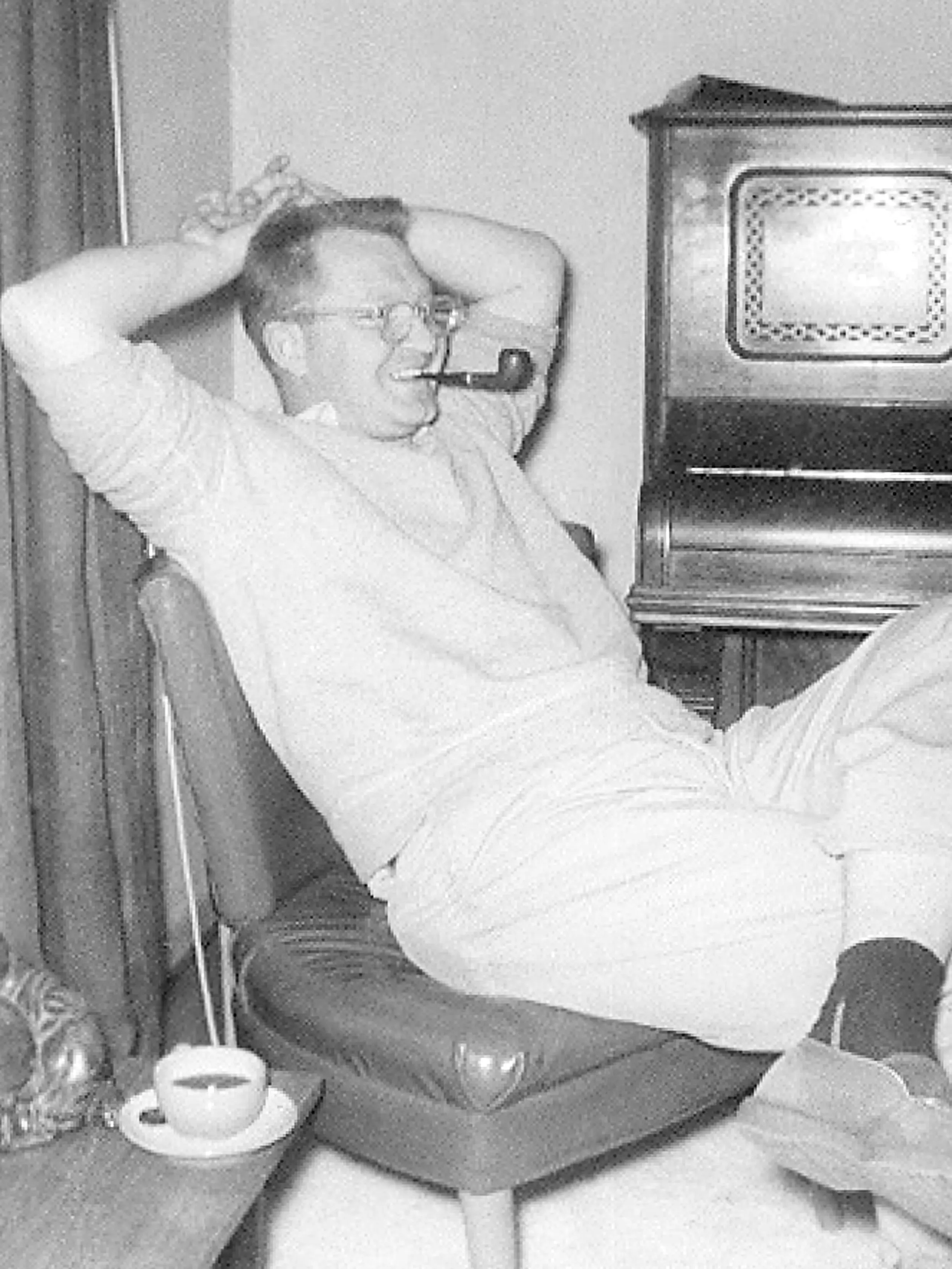 |
Bernard Fulton recruited David Hunt to his “founding faculty” in 1950 to teach history and science and to assist him in administrative matters. Hunt and his wife, Gloria, happened to live in a cottage behind founding board member Lindsay Greene’s home, so it seemed destiny that he would join the educational venture. Hunt dove into his duties at Greenhill with gusto, even joining Fulton, Jennie Stuck, and Charley Leathers in going without a salary the first year in order to balance the budget. Hunt also penned the lyrics to “Hail to Greenhill” when David Guion agreed to compose the music. Fulton turned to Hunt to be his first Head of Upper School in 1954, when enrollment dictated that need. Hunt left Greenhill in 1958 to lead the charge in Texas for a robust junior college system, and he was the first President of Galveston College before he died in 1968. Hunt was recognized as a Heart of the Hill Hero in 2021, having group Red 5 named after him. |
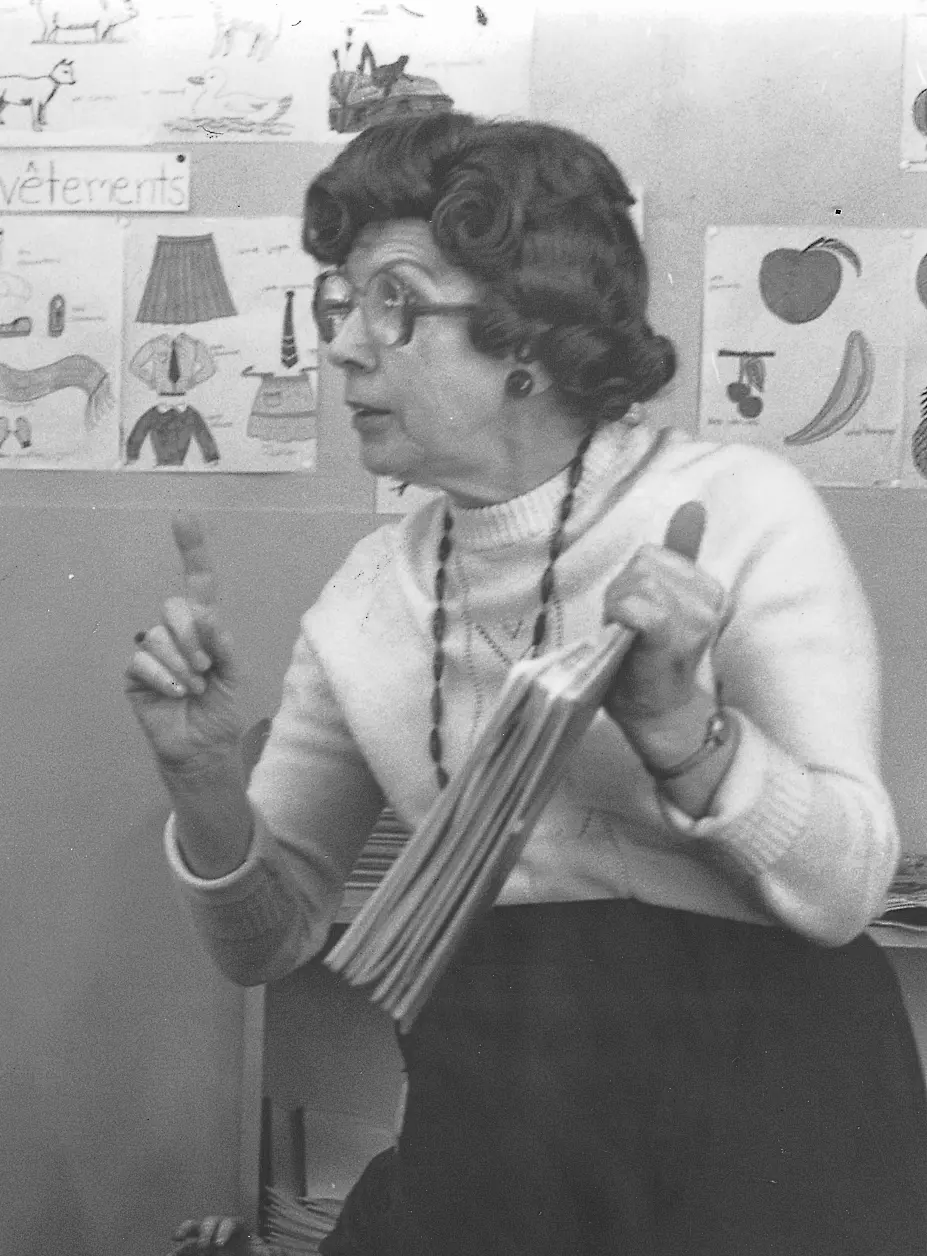 |
A native of Belgium, Madame Maggy Lepair survived the Nazi occupation and then spent most of the 1950s in the Belgian Congo, where she taught French and social studies for seven years at the Benedictine Missionary School. Soon after arriving in the United States, Lepair learned about Greenhill and immediately fell in love with the young school. Trying to make ends meet, for several years, Lepair taught French at Greenhill on weekday mornings, while in the afternoons, she worked eight-hour shifts at Sanger Harris Department Store in Preston Center. Students fondly recall Madame Lepair’s vocabulary lessons on parts of the body, lessons which she inevitably ended by sticking out her tongue and quickly covering her mouth in mock embarrassment, the students gleefully screaming, “La longue!” Fiercely proud of her naturalized American citizenship, which she received in 1965, Lepair’s claimed that her most memorable Greenhill moment occurred in 1990, when the school dedicated campus’ American flag pole in her honor. Lepair was recognized as a Heart of the Hill Hero in 2003, having group Gold 2 named after her. |
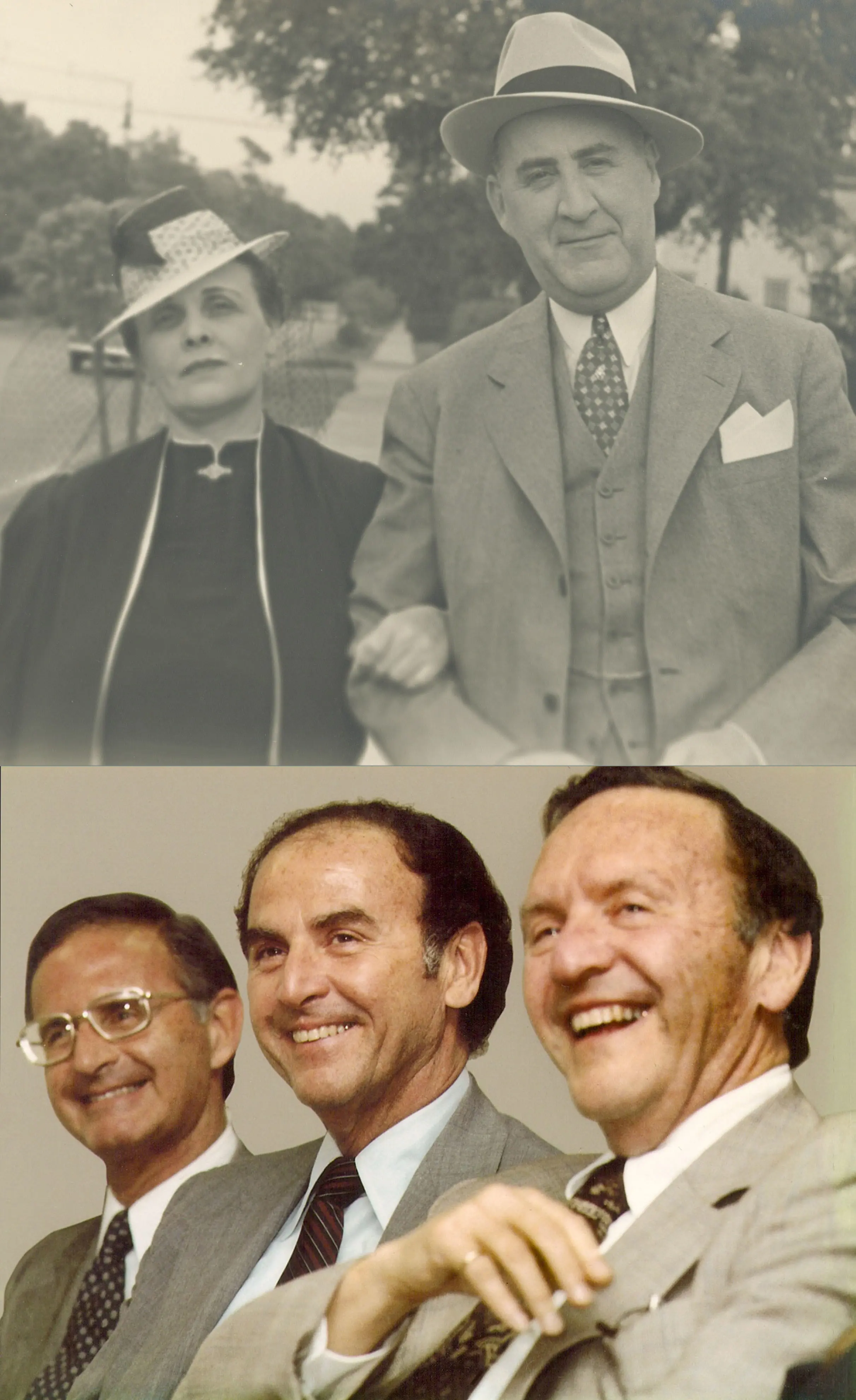 |
In 1919, Milton Levy, Sr., founded National Disinfectant Company. Upon his death in 1946, his wife, Ruth, and three sons – Lester, Milton, Jr., and Irvin – would take on the business, which by 1960 would blossom into National Chemsearch (NCH). Ruth and her three sons regarded education as a paramount concern and began a six-decades long family relationship with Greenhill in 1963, when Irvin enrolled his oldest son, Robert, in Preschool. Lester enrolled his daughter Ann and son Lester, Jr., in 1964, and Milton, Jr. completed the family connection when his daughter, Nancy, enrolled in 1969. When the school built a state-of-the-art, open-space Middle School building in 1973, it was the Levy Family who stepped up with the major gift, and when a larger Middle School building was needed in 1995, the original Levy Middle School was replaced with a new Levy Middle School, the family’s generosity once again coming to the fore. The Levy Family was recognized as a Heart of the Hill Hero in 2010, having group Blue 5 named after them. |
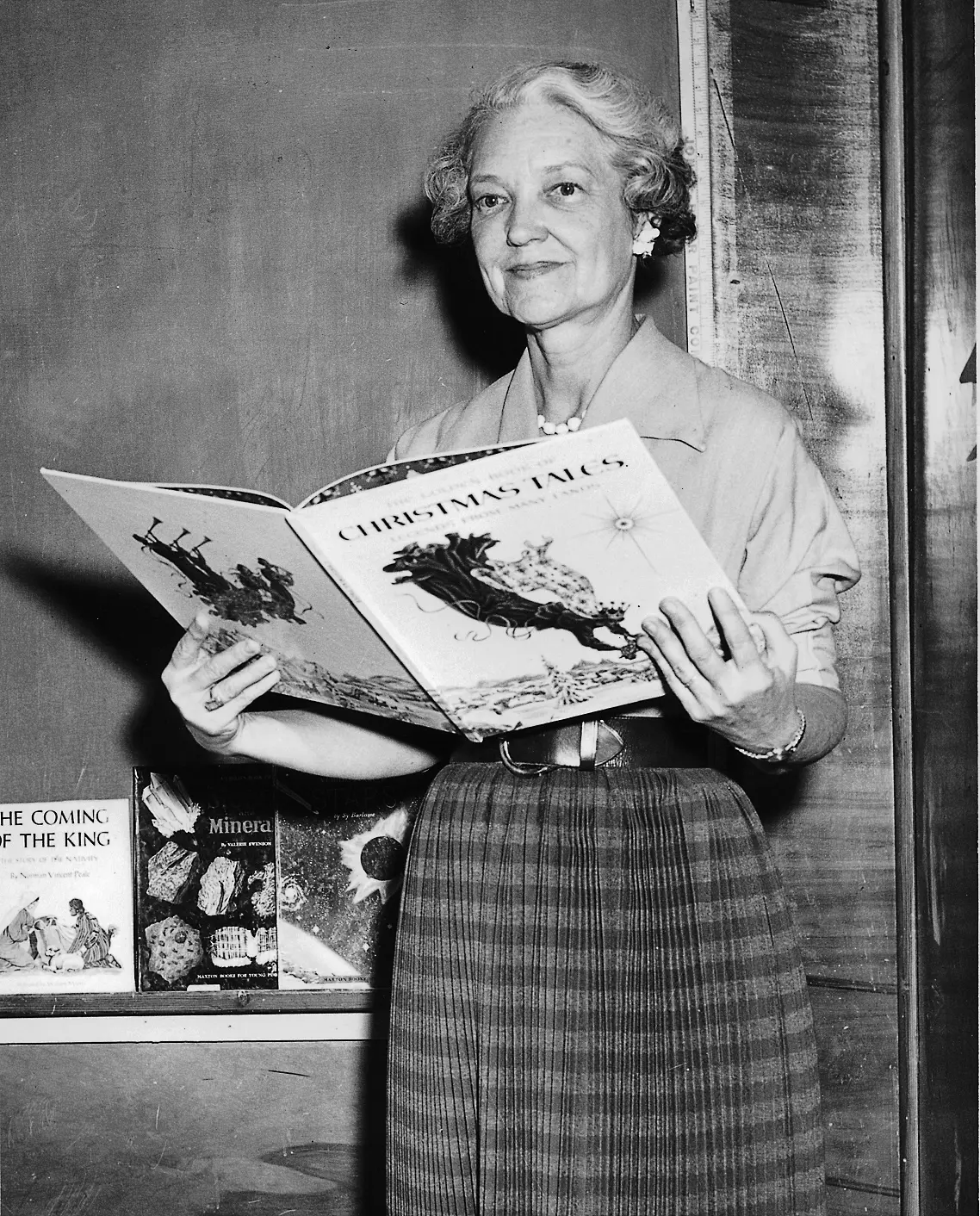 |
Helen Misura became one of the 12 founding faculty members of Greenhill School when Bernard Fulton asked her to join the new venture as the first Head of Lower School in 1950, a position she held until her retirement in 1969. Misura oversaw the expansion of the Lower School, which doubled the number of sections for each grade level in 1960. She also helped ensure continuity between the Preschool and Lower School programs when Preschool was officially added as a separate division in the 60s. The highest award in the Lower School was named after Misura – the Helen Misura Award honors the fourth-grade students who best exemplify the qualities of scholarship, citizenship, sportsmanship, and leadership. To honor her contributions to Greenhill, Misura was recognized as a Heart of the Hill Hero, having Blue 6 named after her. |
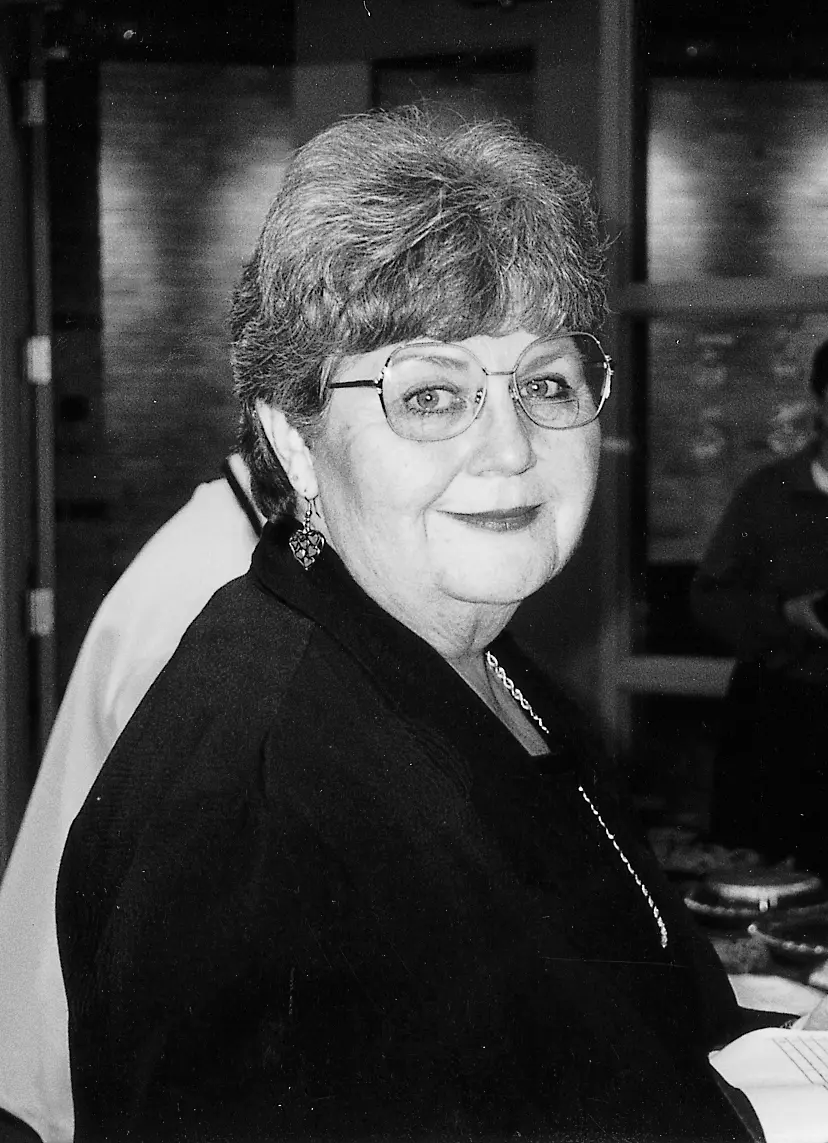 |
Lavonda Monk joined the Greenhill community in 1965. She began her career as a bus driver, picking up kids from all over Dallas in the morning and dropping them back at their homes every afternoon. Not long after her arrival, Monk was asked to help out in the Business Office between her morning and evening drives. When Greenhill eliminated its bus service, Monk took over the bookstore operations. She had a genuine interest in students and alumni and always remembered everyone. In 1990, she was named an Honorary Alumna of Greenhill School. To honor her contributions to Greenhill, Monk was recognized as a Heart of the Hill Hero, having Blue 4 named after her. |
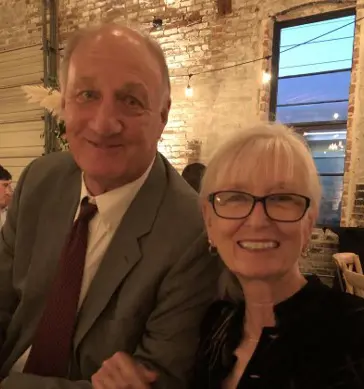 |
A stellar pair of educators who arrived at Greenhill a year apart, Randy Thompson Murphy and Bob Murphy put their individual and collective stamp on the school over the course of two decades. Randy came to Greenhill in 1977, and she made an immediate impact on her math students with her attention to detail and deep and genuine interest in getting to know her students. She later became Greenhill’s first Computer Department Chair, helping to advance the school’s technology efforts while also helming the Math Department, a rare-double-chair-holder. Randy partnered with Science Chair Skip Kilmer to create a combined Pre-Cal/Physics team-taught class that became a model for other NAIS schools across the country. Starring on the 1969 College World Series runner-up Tulsa Hurricanes, Bob Murphy was drafted by the New York Mets, but injuries cut short a baseball career and turned him the direction of his true calling – working with young people. Bob came to Greenhill in 1978 as Dean of Middle School for two years, before moving into the role of Assistant Head of Upper School when his long-time friend, Doyle Tunnell, became Upper School Head. Murphy taught math and was head varsity coach for three programs – boys' basketball, baseball, and golf – while holding down his administrative duties. Kindred spirits when it came to putting students first and to pouring themselves into creating community, the two married in 1991, creating a bona fide Greenhill Power Couple! The couple was recognized as a Heart of the Hill Hero in 2023, having group Gold 11 named after them. |
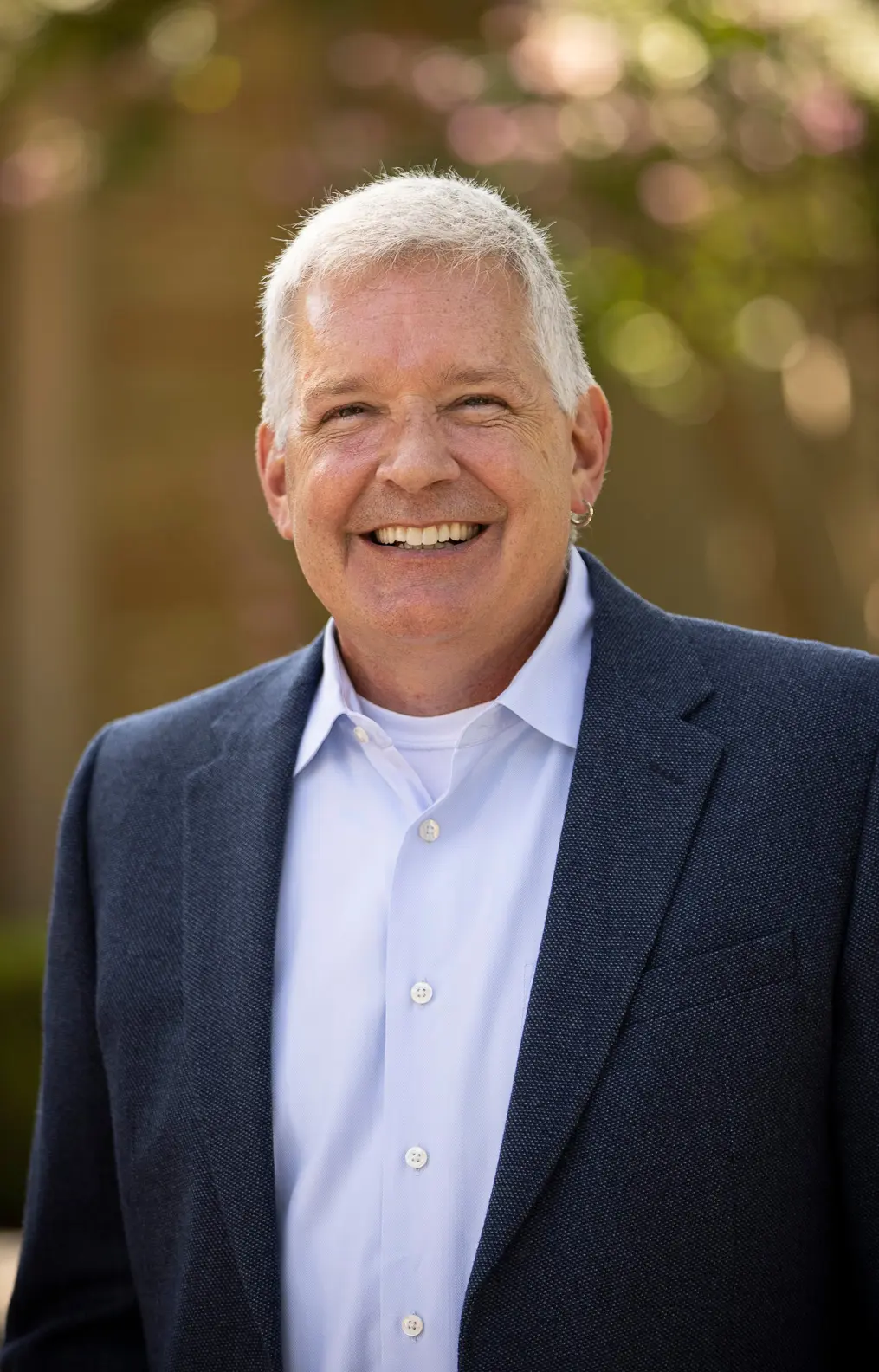 |
Tom Perryman originally came to Greenhill in 1967 at the age of three and graduated in 1981. He came back to Greenhill and has served his alma mater as a sixth grade English teacher, coach, Head of Lower School, Director of Admission, and currently serves as the Associate Head of School for Mission, Community, and Culture. He coached over 30 seasons of football and baseball at various levels and is the play-by-play announcer at Friday night football games. Since 1991, Perryman has taught Upper School English courses on various subjects including Southwestern literature, the literature of human rights in the United States, and Dallas history. Perryman was instrumental in creating the Faculty Leaders program, is the co-founder and director of the Lucinda F. Carter Associate Teacher Program and leads the Legends program. He coordinates the Founders Day assembly – an annual tradition when the entire school comes together to celebrate the individuals and ideals upon which Greenhill has been built. Perryman wrote From Humble Beginnings (2001) with his brother David ’83, documenting the first 50 years of Greenhill School with great care and detail. |
 |
Penny Powell was a sports pioneer in Dallas. Arriving in 1969 as a former member of the United States National Field Hockey Team, Powell confronted a region with virtually no field hockey history or knowledge. In addition to teaching physical education at Greenhill, Powell immediately launched a varsity girls field hockey program, and within five years, her Hornet squad won the Southwest Preparatory Conference championship in 1974. In 1971, Powell arranged for Greenhill to host a match between the German National Team and the U.S. National Team here on campus. She invited players from all of the SPC schools, had a band and opening ceremonies, and put Greenhill on the national field hockey map. Not focused solely on field hockey, however, Powell began her Greenhill career to find that there was no interscholastic athletics program at all for Middle School girls. She quickly set about changing that, creating a broad and thriving menu of sports for girls in seventh and eighth grades, thereby establishing the excellence that continues today. Powell was recognized as a Heart of the Hill Hero in 2013, having group Green 7 named after her. |
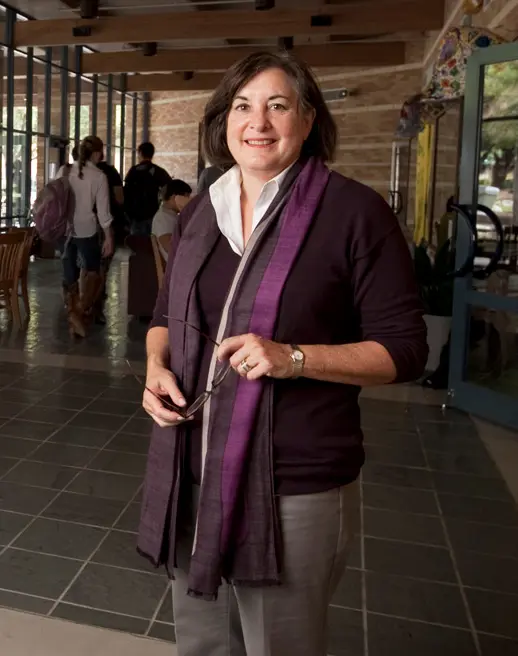 |
Sally Rosenberg started at Greenhill in 1994 as the School’s first Director of Community Service and Service Learning. Under her direction, the School’s community service program grew to encompass every student on campus. In Preschool through Middle School, students engage in grade-level or division-wide projects, and in Upper School, students have required community service hours each year. Sally retired at the end of the 2016-2017 school year after 24 years, and at that time the Teichman Family named the office in her honor: The Sally Rosenberg Service Learning and Community Service Office. To honor her contributions to Greenhill, Rosenberg was recognized as a Heart of the Hill Hero, having Blue 12 named after her. |
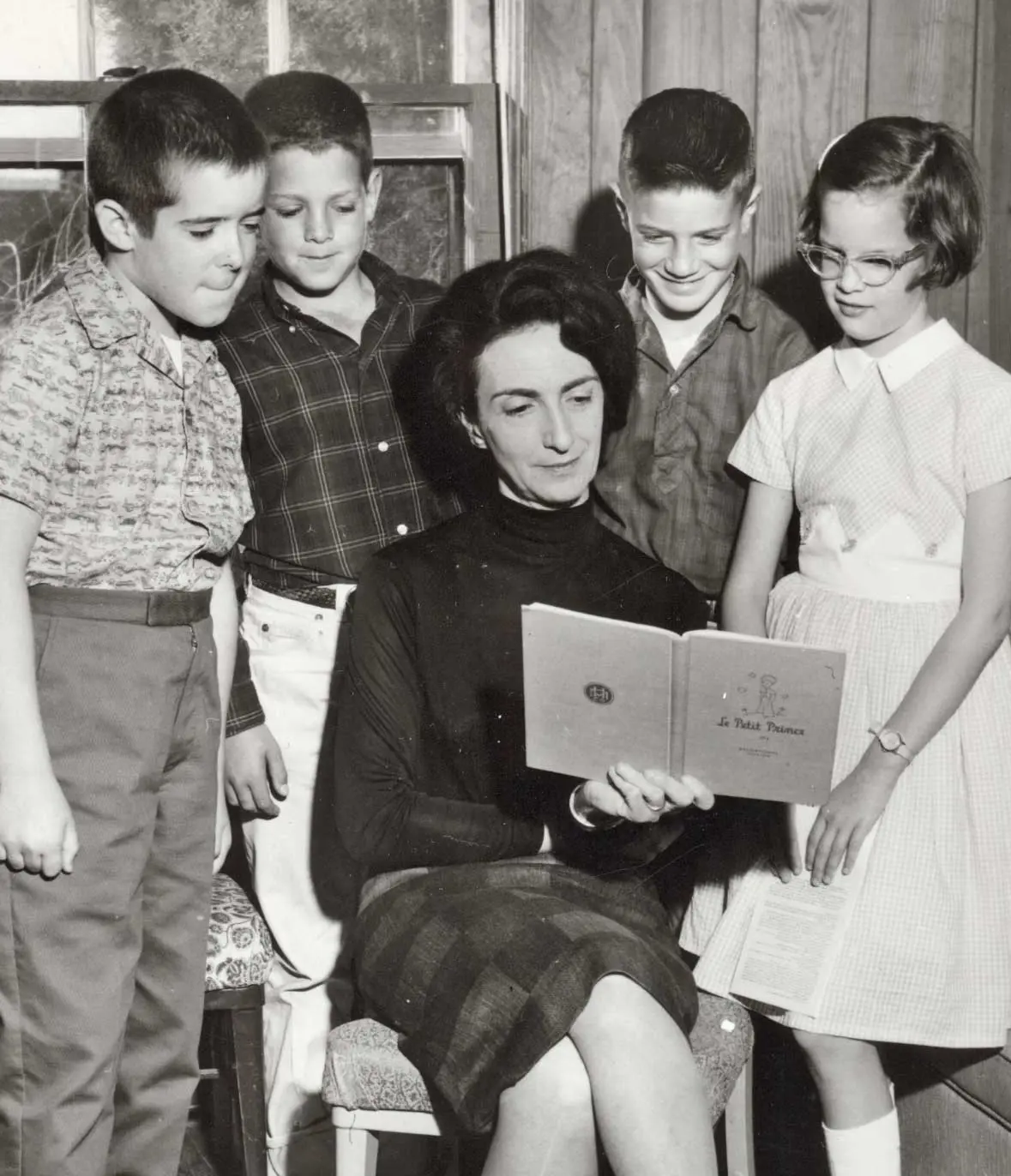 |
In 1954, Muriel Seldin embarked upon a 28-year campaign to make art history and haute culture permanent fixtures in the Greenhill community. Sue Roman fondly remembered the dinners Seldin used to host at her house for the entire History Department faculty: “Muriel would prepare gourmet meals, and we’d all sit down at a table like civilized people and carry-on wonderful conversations about literature, history, or art. Sometimes, she invited teachers to present scholarly papers on subjects they were interested in.” Seldin’s legacy continues to support Greenhill students interested in the arts. Upon her death in 1994, she bequeathed a generous gift to Greenhill’s Cultural Arts Committee, an organization whose mission is to attract visiting artists, performers, and writers to campus to interact with students and faculty. Seldin was recognized as a Heart of the Hill Hero in 2008, having group Red 4 named after her. |
 |
Bernard Fulton hired Jennie Stuck to teach reading at Texas Country Day School in the 1940s. When he embarked upon his new project – founding Greenhill School – she signed on immediately. She joined Greenhill as a reading specialist and left no stone unturned when it came to learning new techniques for reading instruction, becoming nationally renowned as a reading expert. Stuck was Greenhill’s first Director of Summer School and administered Greenhill’s admissions and in-house standardized testing. She was instrumental in improving the academic strength of Greenhill’s student population in the first decade of the School. To honor her contributions to Greenhill, Stuck was recognized as a Heart of the Hill Hero, having Green 1 named after her. |
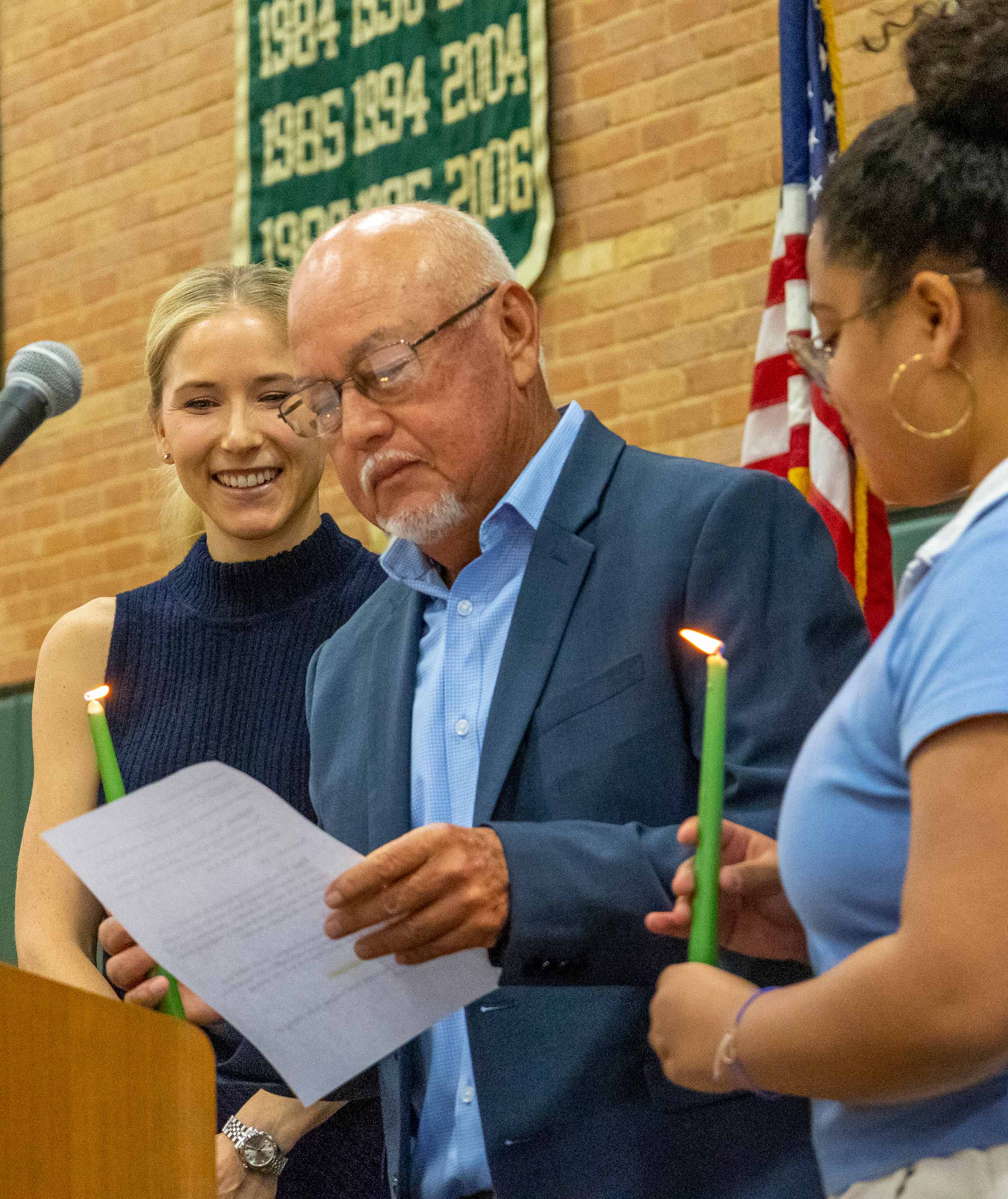 |
Faustino “Tino” Torres came to work at Greenhill School as a teenager in 1979, and for 45 years, he gave his all to a school he loved dearly. Soon after arriving on the Hill, his work ethic, his joy in plying his talents in the outdoors, and his gifts as a grass-whisperer led him to specialize as the go-to groundskeeper for the school. His magic with Greenhill’s playing fields was the stuff of legend, with his artistry openly admired by Greenhill student-athletes and coaches and even opposing teams, who marveled at the exquisite care given to the campus’ athletic fields. There was no finer natural grass playing surface in the state of Texas than Greenhill’s Brinkmann Field, and even the eventual champion Brazilian National Football Club that headquartered at Greenhill during the 1994 World Cup expressed their awe at the pristine pitch. Torres was a groundskeeping virtuoso, a devoted and humble servant-leader, a brilliantly creative problem-solver, a master carpenter, a caring mentor, a gentle soul, a loyal friend, a loving father and grandfather, and a man of consummate integrity. He was a model for all lucky enough to know him. And for nearly half a century, he helped to make Greenhill School the institution that it is today. Torres was recognized as a Heart of the Hill Hero in 2024, having group Red 9 named after him. |
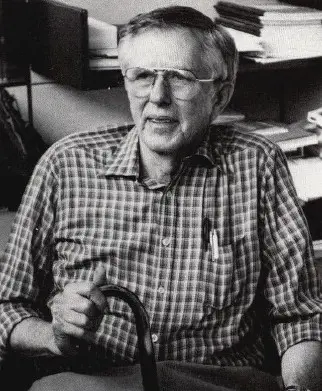 |
Richard "Dick" Williams waxed poetic about life and literature in a subdued yet silky voice that commanded the attention of all who were present. During the course of his English lectures, he invariably strayed from the beaten path to cast a critical eye on the banal activities of the “Vulgar,” a term he used to describe the commons area outside his classroom in the former Bernard Fulton Upper School building. His elucidation of the concept of “doppelgänger” in Joseph Conrad’s “The Secret Sharer” was perhaps his most powerful and haunting lesson. Anyone who ever heard him read the passage in which the narrator watches the “other” climb over the side of the boat and disappear into the murky depths of the sea will forever feel the ineffable rippling effect of Dick Williams. Williams was named an Honorary Alumnus of the School in 1993, and he was recognized as a Heart of the Hill Hero in 2001, having group Green 2 named after him. |
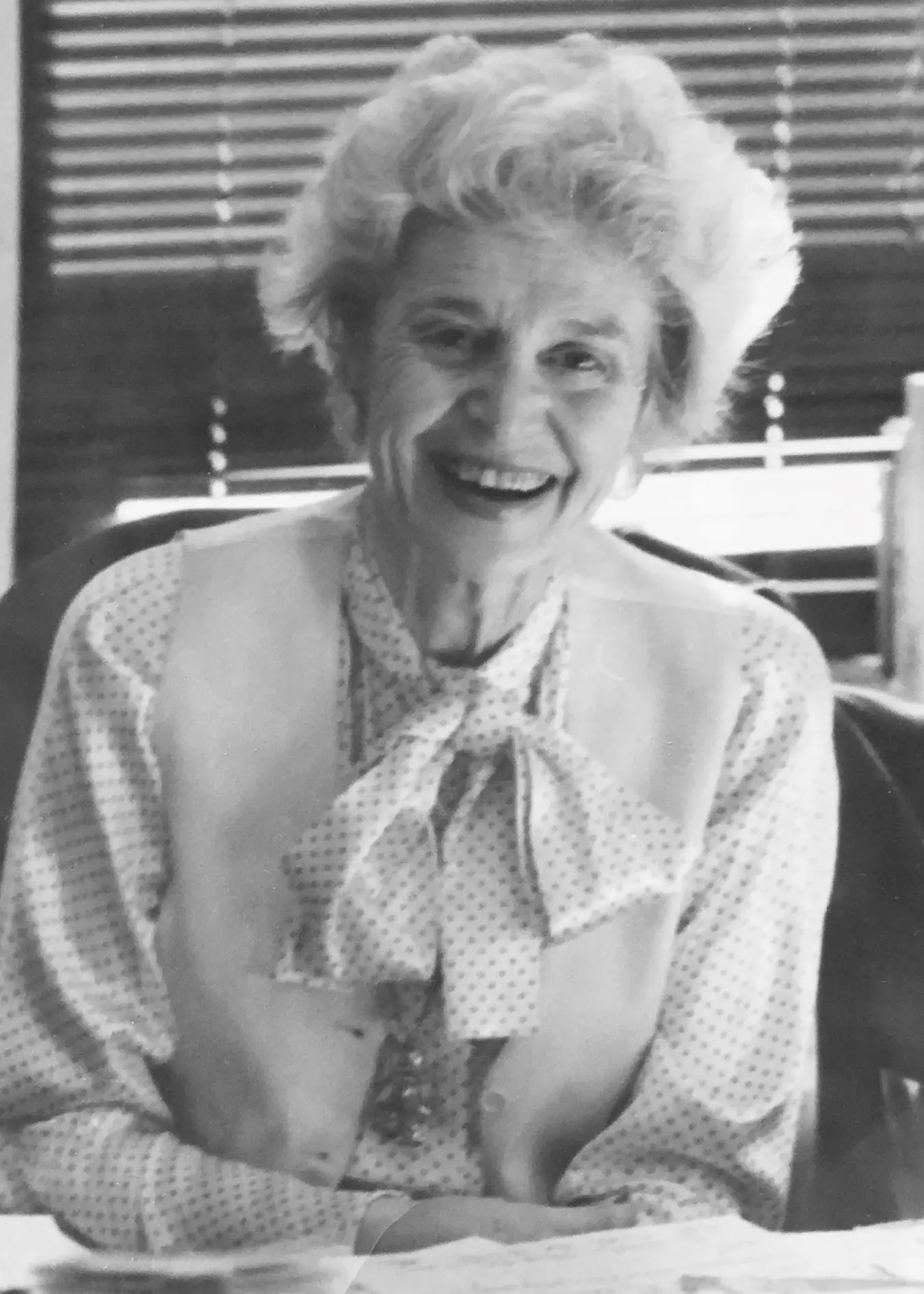 |
After being hired by Bernard Fulton in 1972 as a college counselor, Rhea Wolfram was determined to change the way Greenhill families approached college decisions and the way universities and the community viewed Greenhill. She played a pivotal role in elevating Greenhill’s reputation in Dallas and the nation. Wolfram claimed her greatest contribution to the Dallas private school community was talking St. Mark’s and Hockaday into collaborating on the first independent school college fair in Dallas. The inaugural venture was hosted at Greenhill in 1973. To honor her contributions to Greenhill, Wolfram was recognized as a Heart of the Hill Hero in 2019, having group Gold 10 named after her. |

|
For years, Agnes Baldwin operated a well-respected preschool in Dallas, and in January 1951, Bernard Fulton convinced her to move her enterprise to the Greenhill campus, beginning a collaboration that thrived until her retirement in 1978. A staunch believer in creative play, Baldwin’s preschool revolved around exploration, the arts, and myriad games of the imagination. Her students recall her finger paints, musical instruments, giant boxes of dress-up clothes, ribbons, boas, and those memorable dramas – The Nutcracker and Stone Soup. One parent painted Baldwin’s early childhood philosophy to a T: “Mrs. Baldwin was so interested in her students – not that they would learn their ABCs when they were three years old, but that they chased butterflies and did all the things that children really need to be happy with themselves.” Baldwin was recognized as a Heart of the Hill Hero in 2002, having group Blue 2 named after her. |

|
The racial integration of Greenhill was hardly a dramatic event, according to those who were there at the time. When young George Birdsong enrolled in fifth grade at Greenhill in 1967, it was a natural extension of the school’s mission. “Nobody made a fuss about it,” remarked Bernard Fulton. “But I did say to the faculty, ‘Don’t forget that when he walks through that door, he’s a Greenhill student, period.’” Looking back on his role as a pioneer, Birdsong remarked that the educational opportunities were more important to him than just his role in integrating the school: “Attending Greenhill has changed my life in a significant way, much more than being the first African American student. It was a total life-changing experience. There was so much encouragement to explore things intellectually at Greenhill. Greenhill has opened up so many possibilities… and that’s because of the people who were there with me – not just the teachers, but also the other students.” Birdsong was recognized as a Heart of the Hill Hero in 2011, having group Gold 6 named after him. |

|
Steve Blanchard arrived on the Hill in 1971 to teach Middle and Upper School history and soon learned that Greenhill job descriptions are rarely that lean or simple. In short order, he was coaching cross country, tutoring students, and driving buses. His all-in style almost immediately inspired Bernard Fulton and Phil Foote to tap him to lead a new initiative with the Boys Clubs of Greater Dallas. The Independent School Project (ISP) grew as a partnership out of shared goals between the Boys Clubs and Greenhill – to “work together cooperatively to serve socioeconomically disadvantaged children identified as having exceptional academic abilities and a desire for greater academic challenge.” Blanchard spearheaded the success of the ISP program, and decades later, van-riders from that era still lavish him with grateful praise for his mentorship. Blanchard became Director of Admissions in 1982, where he presided over a time of tremendous growth in the School’s history. Blanchard was recognized as a Heart of the Hill Hero in 2025, having group Green 10 named after him. |

|
Peter Briggs was named the third Head of School at Greenhill in the fall of 1992. His eight-year tenure kicked off with the Reach for the Stars capital campaign, which funded the new Levy Middle School and Three Chimneys buildings, the renovation and expansion of the Agnich Science Center, and the repurposing of the existing Levy Middle School as the new Fine Arts Building. Briggs also oversaw changes to division schedules, programmatic and organizational changes that strengthened the authority and accountability of the division heads, and commissioned a committee to standardize the school’s image, which resulted in the first published Graphic Standards and Style Manual for Greenhill. In the spring of 1999, Briggs announced his retirement and was met by a standing ovation in recognition of his many accomplishments. Greenhill honored Briggs at Homecoming in 2000 by dedicating the Briggs Clock Tower located in the Foote Quadrangle. Briggs passed away on July 25, 2014. |

|
When Bernard Fulton needed a place to build his school – and a loan with which to launch the enterprise – he visited legendary Dallas land baron and philanthropist, W.W. Caruth, Jr., to seek his counsel. Fulton explained that he was having no luck procuring a loan with his limited resources, and Caruth wasted no time in addressing the matter: Caruth agreed to lease the new school 10 acres of land on the northeast corner of Walnut Hill and Hillcrest, adjacent to Hillcrest High School and a water reservoir, for $100 per month. So taken was Caruth by Fulton’s vision that he returned the first rent checks and simply agreed to loan the school the land, rent-free, as long as it was needed. For nine years, Greenhill benefitted from Caruth’s stunning generosity as it established itself as a first-rate school. Two of Caruth’s sons – William ’55 and John ’64 – graduated from Greenhill. Caruth was recognized as a Heart of the Hill Hero in 2014, having group Blue 8 named after him. |

|
The road to Greenhill was an amazing adventure for Poland native Kate Cecil. The mother of future teacher Christine Eastus, Cecil had survived the Nazi blitzkrieg and experienced life on three continents by the time she arrived at Greenhill in 1957. Following the war, the Cecils moved to the United States, where Kate held teaching positions at McMurry University and Hardin-Simmons University. In addition to teaching German and Latin at Greenhill, Cecil and her students founded the Echo Latin Club, a service organization that instilled the ethic of doing for others as a primary value of the school. Her students recall her accent, her stern yet humorous admonitions, and the twinkle in her eye. Cecil set a standard for personal responsibility that shaped the ethos of Greenhill forever. The Kate Cecil Award is given at graduation to the senior who renders the most outstanding service to the Dallas community. Cecil was recognized as a Heart of the Hill Hero in 2006, having group Blue 3 named after her. |

|
Jackie Conlee was hired in 1954 to teach high school English, and she quickly made her mark as a charismatic and beloved teacher. That same year, Bernard Fulton and Charles Hodge Jones, the school’s curriculum director, decided to separate grades 5-12 into distinct divisions (Middle and Upper Schools), each with its own leadership. By 1958, Conlee was tabbed to be the Head of Upper School, and for a time, all four of Greenhill’s divisions were led by women (PS – Agnes Baldwin, LS – Helen Misura, MS – Mildred Fulkerson, US – Jackie Conlee), a rarity in the independent school world of the 1960s. During her tenure at the helm of the Upper School, Greenhill joined the Southwest Preparatory Conference, held its first Homecoming (in the fall of 1963), introduced computers into the curriculum, and moved to the “new” campus in Addison. Conlee was recognized as a Heart of the Hill Hero in 2021, having group Red 6 named after her. |

|
In 1959, during his tenure as Board Chair, Jerome Crossman recognized that Greenhill had outgrown its 10-acre campus and that its future viability required a new and significantly larger location on which to grow. Crossman was the first to identify an 83-acre turkey farm in Addison as a potential spot, despite the fact that the land was surrounded by small ranches, far beyond most of the settled neighborhoods in Dallas, before the construction of either LBJ (635) or the Dallas North Tollway. Crossman and fellow board members Fred Agnich and Frank Schultz purchased the land, shortly thereafter turning over the deed to the property to the school. In the aftermath of the devastating fire in 1963, Crossman found himself with Agnich at a watershed board meeting, forced to determine the future of the school: Agnich threw down the gauntlet to the board, while Crossman blocked the doors to the meeting room – the board would either vote to embark on a campaign to build the school’s first permanent, bricks-and-mortar buildings or would cease its operation. The first two edifices to come out of the process – Agnich Science Building and Crossman Hall – honored the courageous and unflinching resolve of these two extraordinary leaders. Crossman served on Greenhill’s board from 1958 until his death in 1970. Crossman was recognized as a Heart of the Hill Hero in 2017, having Green 9 named after him. |

|
“Greenhill was my beloved school,” explained eighth-grade reading evangelist Perry Degener. “It was my dream job, right out of Kenyon College: figuring out how to unlock ways for my eighth-grade students to get the most enjoyment from the books they were reading.” And for 18 glorious years, Degener did exactly that. Never without butcher paper handy for class brainstorming, Degener honored his students’ ideas and stoked their powers of imagination, invariably sporting chalk or marker on his upper lip from his own musing with a writing utensil in hand. Degener also served as eighth-grade team leader and later English Department Chair. He even founded the Ultimate Frisbee team at Greenhill… and at one point was coaxed into coaching the short-lived Middle School wrestling team, but he will always be remembered – and revered – for the passionate manner in which he instilled in his young charges a love of literature. Degener was recognized as a Heart of the Hill Hero in 2024, having group Red 12 named after him. |

|
Estelle Dickens arrived at Greenhill in 1960 and quickly established herself as a math specialist, student advocate, testing guru, brain researcher, and parent educator. In 1976, Dickens was named Head of Lower School, a position she held for 14 years, aiming toward her goal of having “the best Lower School in the city.” She then served as Assistant Head of School, and in later years, Dickens employed her vast experience in leading the school’s learning assistance program. When she passed away in 2004, she was the longest-serving employee in the school’s history at 44 years. To honor her contributions to Greenhill, Dickens was recognized as a Heart of the Hill Hero, having Gold 1 named after her. |

|
Beloved as a sort of mad scientist and whirling dervish of excited energy at the same time, John Dunn left his mark on a generation of young Greenhill scientists, tapping into their natural wonder at the world around them and catalyzing their joy in experimentation. Each year on Medieval Day, Dunn would dress as Merlin the Magician, and as Head of Middle School Lucinda Carter described, he “was a pied piper to his students.” His Rocket Club fired the engines of fifth-grade imaginations with projectiles flying around the campus, and for years afterwards, his former students would witness the launches from afar with wistfulness and fond memories. Always in a short-sleeved shirt, tie, and white lab coat, Dunn moved through the Agnich Science Building with a twinkle in his eye and – as colleague Peggy Norvell Turlington ’75 recalled – "the most mischievous giggle coming from a big man!" Dunn was recognized as a Heart of the Hill Hero in 2024, having group Red 10 named after him. |

|
Sally Dunning first came to Greenhill in 1982 as a parent when she enrolled her daughter, Meredith, in kindergarten. Within two years, she found herself serving on the Board of Trustees, eventually chairing the board from 1990-92. After completing her term as board chair, Dunning was tapped to lead the Reach for the Stars campaign, which would transform the campus with a new administration building, a re-purposed fine arts center, a renovated Agnich Science Building, a dramatic new “front door” which moved the main entrance from Midway Road to Spring Valley, and the spectacular new Levy Middle School. Dunning was recognized as a Heart of the Hill Hero in 2007, having group Gold 4 named after her. |

|
Sally Estes, parent of Risser '83 and Kris '80, served on the Board of Trustees from 1976 to 2012, and served as Board Chair from 1983 to 1986. In the mid-1970s, Sally is credited for starting what is now known as Employee Appreciation, by spearheading an entire Teacher Appreciation Day designed to thank the teachers for their dedication to the students. More notably, as Board Chair, Sally signed a 99-year land-lease agreement with Trammell Crow Company on January 7, 1985. The lease of the parcel of land adjacent to what is now Midway Road was the culmination of a two-year process where the Land Lease Committee evaluated proposals from a number of firms. The lease gave the School a source of long-term income to bolster the School’s finances, making it more competitive with other schools in town. Later in 1997, Greenhill sold the lease to Cardinal Capital Partners, Inc, which more than doubled the School’s endowment at the time of the sale. Sally’s leadership grounded the School financially, ensuring that it would continue to serve students for years to come. To honor her contributions to Greenhill, Sally was recognized as a Heart of the Hill Hero, having Red 7 named after her. |

|
Philip G. Foote spent 23 years at Greenhill, first serving as Head of Lower School, then Head of Lower and Middle School, and finally assuming the role of Head of School from 1976 to 1992. He advanced Fulton’s vision by growing enrollment from 984 to 1,210, increasing the number of full-time faculty members from 95 to 135, and establishing financial stability for the school by leading the Greenhill Park land-lease initiative, which solidified and grew Greenhill’s endowment. He was also known and loved for wearing red-plaid pants and playing the piano during the holidays. |

|
When Greenhill moved to its new Addison campus in 1959, board member Fred Agnich immediately engaged internationally renowned architect O’Neil Ford of San Antonio to help sculpt a campus out of the hardscrabble prairie. A student of the Arts and Crafts Movement, Ford sought to create a Texas aesthetic. Ford drew a campus master plan for Fulton and designed the first four buildings on campus: the Agnich Science Building, Crossman Hall, Montgomery Library, and Cox Gymnasium, establishing the architectural vernacular that has been honored in subsequent projects since the 1960s. O'Neil was recognized as a Heart of the Hill Hero in 2015, having group Gold 7 named after him. |

|
Helen and Bernard Fulton are the two most well-known founders of Greenhill School. He demonstrated his energy, versatility, and commitment to education in all guises by serving as chairman of the Addison Independent School District's school board for 10 years. In 1950, he became the founding headmaster of Greenhill School. From 1950 to 1976, Fulton served as the founding headmaster of Greenhill School, where he attracted strong teachers and secured the support of families and board members. He also pioneered the concept of open-space education and the developmental primer program in the Southwest and proved that his vision of independent co-education represented the wave of the future for the region. When he retired from Greenhill, he was recognized for his unwavering commitment to his vision and for his incessant drive to improve, never allowing the school to rest on its laurels despite its growth (from 62 to 1,002 students) and its solid position as the top coeducational independent school in the area. |

|
Helen and Bernard Fulton are the two most well-known founders of Greenhill School. Described by Estelle Dickens as a “behind-the-scenes person,” Helen poured herself into the monumental task of carving out a dream from the impossible hardscrabble of the North Texas prairie. From bookkeeping to answering phones to making lunches to substitute work to sewing tote bags, no task was too menial for her. Though not a trained teacher, Fulton was a keen observer of children and a tireless researcher of educational methods, and it was her initiative that brought the Cuisenaire Rods and the Orton-Gillingham reading program, among other ideas, to Greenhill. She also organized and led the annual Greenhill Summer Studies Abroad Program, a humanities-based summer travel and study experience for Upper School students. But perhaps her overarching achievement lay in her creation of a carpool system that spanned the city and provided the vital means for getting students to and from Greenhill during the early years. Quite simply, without her transportation orchestration – and her daily driving rounds – there would not have been students in the school. |

|
Molly Fulton Seeligson, daughter of founders Helen and Bernard Fulton, was one of the original 62 Greenhill students. As a student, she was deeply involved in the Greenhill community – she served as head cheerleader, Homecoming queen, and joined myriad clubs, including riding club, bridge club, glee club, student council, and even the youth council for traffic safety. She earned multiple accolades during her time as a student, including the Ronnie Freeman award, DeLay Service to Greenhill award, the Fulton award, and Valedictorian. After Greenhill, she followed in her parents’ footsteps with a career in education. She led The Clear Spring School in Eureka Springs, Arkansas, served as Head of School at the Fulton School, and held the role of Director of The Eugene McDermott Scholars Program at the University of Texas at Dallas. Through the years, she maintained a strong relationship with Greenhill, volunteering while her son attended the School and serving on the Board of Trustees. In recognition of her longstanding commitment to the School, the Board unanimously voted to bestow her with the unique honor of Life Trustee in May 2015. A few weeks later, she received the Distinguished Alumna Award from the Greenhill Alumni Association. |

|
Doris and Leonard Green had a son, John, who had been in the local public schools, and they were quite interested in finding a better school for him. Leonard Green, Doris’ husband and president of Dr. Pepper at the time, was an influential presence in Dallas, and he was a man of action. The idea of a new school having taken root, Bernard Fulton needed a Board of Directors, and its chair would be a key decision. Having been with Texaco before heading up Dr. Pepper and having even served as president of the Red Cross and the Dallas Salesmanship Club, Leonard Green was willing to help the new enterprise in any way that he could. He agreed to chair the first board. All that remained was a name for the school. Fulton had originally been charmed by the name The Keystone School, and myriad other suggestions had come rolling in. One day, however, when the Fultons and the Greens drove to the new site, the landscape itself staked its claim. Noticing the grassy rise on the Walnut Hill-Hillcrest corner – a water reservoir at one time – Doris Green suggested “Greenhill.” In the context of the Far North Dallas plains, the spot did, indeed, qualify as a hill, and it was green; thus, the institution finally had an identity. On June 14, 1950, Greenhill School was incorporated by the state of Texas, and the Green family had been an integral part of that process. And later, John Green ’55 would marry Georgie Fulton ’53, uniting the two founding families for all time. The Greens were recognized as a Heart of the Hill Hero in 2009, having group Green 14 named after them. |

|
Lindsay Greene poured himself into the speculative enterprise that was Greenhill School in the summer of 1950, with no guarantees that the “dream” would ever materialize. His blood, sweat, and-tears equity gave the school a fighting chance, however, and before serving for two decades on the board of directors, Greene toiled side-by-side with Bernard Fulton and workers from the Texas Housing Company to literally construct the first school building from the ground up. Greene even put his money where his mouth was, signing on to cover the initial loan to build that original school building. After ensuring that the school was off and running in its first location at Hillcrest and Walnut Hill, in 1956 Greene put in motion the process for seeking a larger, more permanent campus to serve the school’s growing needs. On another occasion, Greene played matchmaker of sorts, commissioning his friend, nationally renowned composer-arranger David Guion, to craft an alma mater for the school. Guion, best known for his classic transcription-arrangement of “Home on the Range,” penned “Hail to Greenhill” to lyrics written by faculty member David Hunt, and signed it to “Sweet Ol’ Lindsay!” Greene was recognized as a Heart of the Hill Hero in 2013, having Green 6 named after him. |

|
Scott Griggs’ led Greenhill as Head of School for 18 years. Known for his commitment to the School’s mission, Griggs enhanced campus facilities with the building of the Philip G. Foote Lower School, Child Development Center, Korenvaes Upper School expansion, Maalouf and Frankel Fields, and the Marshall Family Performing Arts Center. Griggs had a steadfast commitment to equity and inclusion, a strong connection to all employees on campus, and a desire to achieve excellence in all Greenhill programs. His vision and leadership brought Bernard Fulton’s vision into the 21st century. |

|
Lee J. Hark joined Greenhill as the fifth Head of School in July 2018. His commitment to excellence, his philosophy of education that aspires to help students become the best versions of themselves, and his keen sense of humor have enabled him to have a tremendous impact on Greenhill during his tenure. His leadership has transformed the campus with the opening of the Rosa O. Valdes STEM + Innovation Center, the renovated Levy Middle School building, the updated Philip G. Foote Quadrangle, and the forthcoming athletics facilities enhancements, including a new Athletics Performance Center. He has also overseen the creation of the School’s Design + Innovation program, the first of its kind in the region, connecting students with companies to help solve real world problems. |

|
Possessing a booming voice that students loved to mimic, Tom Holodak endeared himself to the Greenhill community almost immediately upon his arrival in 1981, and by his fourth year, he had put together an SPC Champion girls cross country team. Toward the end of his vaunted tenure, he accomplished the rare double-championship, leading both the boys and girls track and field teams to SPC titles in 1999. In his fifth year on the Hill, Holodak launched the Greenhill Six-Mile Relay, a grueling team relay that would be run in the Texas summer heat, eventually earning its place as the annual opening to the North Texas cross country season. Holodak will be remembered for more than his accomplishments… or even his voice. His student-athletes would run through fire for him, and his devotion to them is the stuff of legend. Holodak was recognized as a Heart of the Hill Hero in 2025, having group Green 13 named after him. |

|
Early in their senior year, Heather Klein, Brooke Oberwetter, Irwin Sentilles, and Kathryn Tobolowsky, all Class of 1998, found themselves lamenting the way the school had grown and the fact that they no longer felt connected to the kids in Pre, Lower, and Middle Schools. The group sought out Assistant Head of School Tom Perryman ’81 and Director of Alumni Elaine Velvin for help. The idea was floated to create “Legacy Group” family units that would parcel out the entire community – every student and adult on campus – into 80 groups, each group comprising students from four staggered grade levels and with adults from different parts of campus. So on September 5, 1997, the first Heart of the Hill activity – an all-school pep rally – launched the HOH program, and a new tradition was born. With legacy groups remaining together year after year, students and faculty get to watch one another grow up and form bonds that can last a lifetime. The group was recognized as Heart of the Hill Heroes in 2016, having group Red 8 named after them. |

|
Bernard Fulton recruited David Hunt to his “founding faculty” in 1950 to teach history and science and to assist him in administrative matters. Hunt and his wife, Gloria, happened to live in a cottage behind founding board member Lindsay Greene’s home, so it seemed destiny that he would join the educational venture. Hunt dove into his duties at Greenhill with gusto, even joining Fulton, Jennie Stuck, and Charley Leathers in going without a salary the first year in order to balance the budget. Hunt also penned the lyrics to “Hail to Greenhill” when David Guion agreed to compose the music. Fulton turned to Hunt to be his first Head of Upper School in 1954, when enrollment dictated that need. Hunt left Greenhill in 1958 to lead the charge in Texas for a robust junior college system, and he was the first President of Galveston College before he died in 1968. Hunt was recognized as a Heart of the Hill Hero in 2021, having group Red 5 named after him. |

|
A native of Belgium, Madame Maggy Lepair survived the Nazi occupation and then spent most of the 1950s in the Belgian Congo, where she taught French and social studies for seven years at the Benedictine Missionary School. Soon after arriving in the United States, Lepair learned about Greenhill and immediately fell in love with the young school. Trying to make ends meet, for several years, Lepair taught French at Greenhill on weekday mornings, while in the afternoons, she worked eight-hour shifts at Sanger Harris Department Store in Preston Center. Students fondly recall Madame Lepair’s vocabulary lessons on parts of the body, lessons which she inevitably ended by sticking out her tongue and quickly covering her mouth in mock embarrassment, the students gleefully screaming, “La longue!” Fiercely proud of her naturalized American citizenship, which she received in 1965, Lepair’s claimed that her most memorable Greenhill moment occurred in 1990, when the school dedicated campus’ American flag pole in her honor. Lepair was recognized as a Heart of the Hill Hero in 2003, having group Gold 2 named after her. |

|
In 1919, Milton Levy, Sr., founded National Disinfectant Company. Upon his death in 1946, his wife, Ruth, and three sons – Lester, Milton, Jr., and Irvin – would take on the business, which by 1960 would blossom into National Chemsearch (NCH). Ruth and her three sons regarded education as a paramount concern and began a six-decades long family relationship with Greenhill in 1963, when Irvin enrolled his oldest son, Robert, in Preschool. Lester enrolled his daughter Ann and son Lester, Jr., in 1964, and Milton, Jr. completed the family connection when his daughter, Nancy, enrolled in 1969. When the school built a state-of-the-art, open-space Middle School building in 1973, it was the Levy Family who stepped up with the major gift, and when a larger Middle School building was needed in 1995, the original Levy Middle School was replaced with a new Levy Middle School, the family’s generosity once again coming to the fore. The Levy Family was recognized as a Heart of the Hill Hero in 2010, having group Blue 5 named after them. |

|
Helen Misura became one of the 12 founding faculty members of Greenhill School when Bernard Fulton asked her to join the new venture as the first Head of Lower School in 1950, a position she held until her retirement in 1969. Misura oversaw the expansion of the Lower School, which doubled the number of sections for each grade level in 1960. She also helped ensure continuity between the Preschool and Lower School programs when Preschool was officially added as a separate division in the 60s. The highest award in the Lower School was named after Misura – the Helen Misura Award honors the fourth-grade students who best exemplify the qualities of scholarship, citizenship, sportsmanship, and leadership. To honor her contributions to Greenhill, Misura was recognized as a Heart of the Hill Hero, having Blue 6 named after her. |

|
Lavonda Monk joined the Greenhill community in 1965. She began her career as a bus driver, picking up kids from all over Dallas in the morning and dropping them back at their homes every afternoon. Not long after her arrival, Monk was asked to help out in the Business Office between her morning and evening drives. When Greenhill eliminated its bus service, Monk took over the bookstore operations. She had a genuine interest in students and alumni and always remembered everyone. In 1990, she was named an Honorary Alumna of Greenhill School. To honor her contributions to Greenhill, Monk was recognized as a Heart of the Hill Hero, having Blue 4 named after her. |

|
A stellar pair of educators who arrived at Greenhill a year apart, Randy Thompson Murphy and Bob Murphy put their individual and collective stamp on the school over the course of two decades. Randy came to Greenhill in 1977, and she made an immediate impact on her math students with her attention to detail and deep and genuine interest in getting to know her students. She later became Greenhill’s first Computer Department Chair, helping to advance the school’s technology efforts while also helming the Math Department, a rare-double-chair-holder. Randy partnered with Science Chair Skip Kilmer to create a combined Pre-Cal/Physics team-taught class that became a model for other NAIS schools across the country. Starring on the 1969 College World Series runner-up Tulsa Hurricanes, Bob Murphy was drafted by the New York Mets, but injuries cut short a baseball career and turned him the direction of his true calling – working with young people. Bob came to Greenhill in 1978 as Dean of Middle School for two years, before moving into the role of Assistant Head of Upper School when his long-time friend, Doyle Tunnell, became Upper School Head. Murphy taught math and was head varsity coach for three programs – boys' basketball, baseball, and golf – while holding down his administrative duties. Kindred spirits when it came to putting students first and to pouring themselves into creating community, the two married in 1991, creating a bona fide Greenhill Power Couple! The couple was recognized as a Heart of the Hill Hero in 2023, having group Gold 11 named after them. |

|
Tom Perryman originally came to Greenhill in 1967 at the age of three and graduated in 1981. He came back to Greenhill and has served his alma mater as a sixth grade English teacher, coach, Head of Lower School, Director of Admission, and currently serves as the Associate Head of School for Mission, Community, and Culture. He coached over 30 seasons of football and baseball at various levels and is the play-by-play announcer at Friday night football games. Since 1991, Perryman has taught Upper School English courses on various subjects including Southwestern literature, the literature of human rights in the United States, and Dallas history. Perryman was instrumental in creating the Faculty Leaders program, is the co-founder and director of the Lucinda F. Carter Associate Teacher Program and leads the Legends program. He coordinates the Founders Day assembly – an annual tradition when the entire school comes together to celebrate the individuals and ideals upon which Greenhill has been built. Perryman wrote From Humble Beginnings (2001) with his brother David ’83, documenting the first 50 years of Greenhill School with great care and detail. |

|
Penny Powell was a sports pioneer in Dallas. Arriving in 1969 as a former member of the United States National Field Hockey Team, Powell confronted a region with virtually no field hockey history or knowledge. In addition to teaching physical education at Greenhill, Powell immediately launched a varsity girls field hockey program, and within five years, her Hornet squad won the Southwest Preparatory Conference championship in 1974. In 1971, Powell arranged for Greenhill to host a match between the German National Team and the U.S. National Team here on campus. She invited players from all of the SPC schools, had a band and opening ceremonies, and put Greenhill on the national field hockey map. Not focused solely on field hockey, however, Powell began her Greenhill career to find that there was no interscholastic athletics program at all for Middle School girls. She quickly set about changing that, creating a broad and thriving menu of sports for girls in seventh and eighth grades, thereby establishing the excellence that continues today. Powell was recognized as a Heart of the Hill Hero in 2013, having group Green 7 named after her. |

|
Sally Rosenberg started at Greenhill in 1994 as the School’s first Director of Community Service and Service Learning. Under her direction, the School’s community service program grew to encompass every student on campus. In Preschool through Middle School, students engage in grade-level or division-wide projects, and in Upper School, students have required community service hours each year. Sally retired at the end of the 2016-2017 school year after 24 years, and at that time the Teichman Family named the office in her honor: The Sally Rosenberg Service Learning and Community Service Office. To honor her contributions to Greenhill, Rosenberg was recognized as a Heart of the Hill Hero, having Blue 12 named after her. |

|
In 1954, Muriel Seldin embarked upon a 28-year campaign to make art history and haute culture permanent fixtures in the Greenhill community. Sue Roman fondly remembered the dinners Seldin used to host at her house for the entire History Department faculty: “Muriel would prepare gourmet meals, and we’d all sit down at a table like civilized people and carry-on wonderful conversations about literature, history, or art. Sometimes, she invited teachers to present scholarly papers on subjects they were interested in.” Seldin’s legacy continues to support Greenhill students interested in the arts. Upon her death in 1994, she bequeathed a generous gift to Greenhill’s Cultural Arts Committee, an organization whose mission is to attract visiting artists, performers, and writers to campus to interact with students and faculty. Seldin was recognized as a Heart of the Hill Hero in 2008, having group Red 4 named after her. |

|
Bernard Fulton hired Jennie Stuck to teach reading at Texas Country Day School in the 1940s. When he embarked upon his new project – founding Greenhill School – she signed on immediately. She joined Greenhill as a reading specialist and left no stone unturned when it came to learning new techniques for reading instruction, becoming nationally renowned as a reading expert. Stuck was Greenhill’s first Director of Summer School and administered Greenhill’s admissions and in-house standardized testing. She was instrumental in improving the academic strength of Greenhill’s student population in the first decade of the School. To honor her contributions to Greenhill, Stuck was recognized as a Heart of the Hill Hero, having Green 1 named after her. |

|
Faustino “Tino” Torres came to work at Greenhill School as a teenager in 1979, and for 45 years, he gave his all to a school he loved dearly. Soon after arriving on the Hill, his work ethic, his joy in plying his talents in the outdoors, and his gifts as a grass-whisperer led him to specialize as the go-to groundskeeper for the school. His magic with Greenhill’s playing fields was the stuff of legend, with his artistry openly admired by Greenhill student-athletes and coaches and even opposing teams, who marveled at the exquisite care given to the campus’ athletic fields. There was no finer natural grass playing surface in the state of Texas than Greenhill’s Brinkmann Field, and even the eventual champion Brazilian National Football Club that headquartered at Greenhill during the 1994 World Cup expressed their awe at the pristine pitch. Torres was a groundskeeping virtuoso, a devoted and humble servant-leader, a brilliantly creative problem-solver, a master carpenter, a caring mentor, a gentle soul, a loyal friend, a loving father and grandfather, and a man of consummate integrity. He was a model for all lucky enough to know him. And for nearly half a century, he helped to make Greenhill School the institution that it is today. Torres was recognized as a Heart of the Hill Hero in 2024, having group Red 9 named after him. |

|
Richard "Dick" Williams waxed poetic about life and literature in a subdued yet silky voice that commanded the attention of all who were present. During the course of his English lectures, he invariably strayed from the beaten path to cast a critical eye on the banal activities of the “Vulgar,” a term he used to describe the commons area outside his classroom in the former Bernard Fulton Upper School building. His elucidation of the concept of “doppelgänger” in Joseph Conrad’s “The Secret Sharer” was perhaps his most powerful and haunting lesson. Anyone who ever heard him read the passage in which the narrator watches the “other” climb over the side of the boat and disappear into the murky depths of the sea will forever feel the ineffable rippling effect of Dick Williams. Williams was named an Honorary Alumnus of the School in 1993, and he was recognized as a Heart of the Hill Hero in 2001, having group Green 2 named after him. |

|
After being hired by Bernard Fulton in 1972 as a college counselor, Rhea Wolfram was determined to change the way Greenhill families approached college decisions and the way universities and the community viewed Greenhill. She played a pivotal role in elevating Greenhill’s reputation in Dallas and the nation. Wolfram claimed her greatest contribution to the Dallas private school community was talking St. Mark’s and Hockaday into collaborating on the first independent school college fair in Dallas. The inaugural venture was hosted at Greenhill in 1973. To honor her contributions to Greenhill, Wolfram was recognized as a Heart of the Hill Hero in 2019, having group Gold 10 named after her. |


